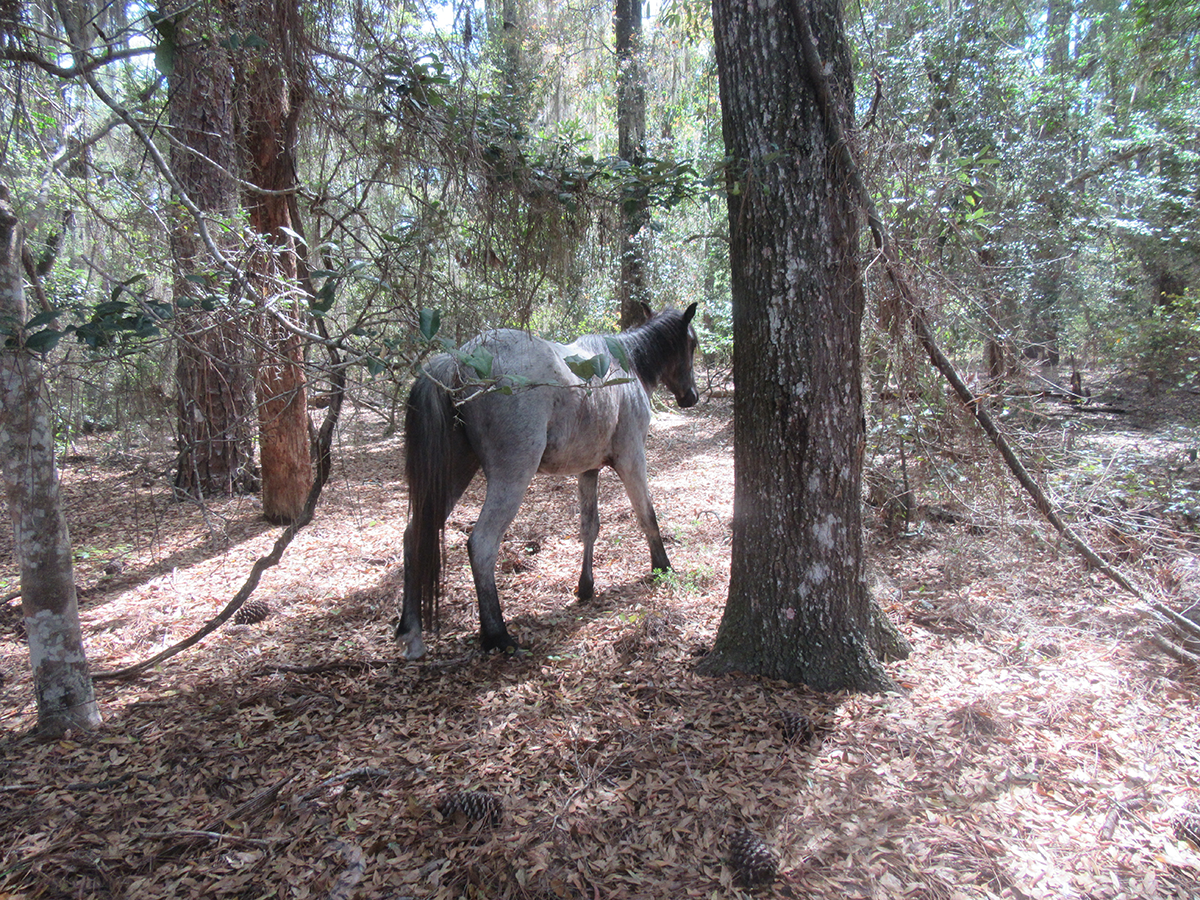In high school, my mother and an aunt took me and a friend to Cumberland Island to camp for a few days and I’d been meaning to do it again ever since. I’ve done a day trip or two over the years, but it’s not the same as having at least one full day and night. It is a lot easier to get a camping spot on the island now, thanks to online reservations, but there are still plenty of challenges. You have to reserve a spot on the ferry too, pay another fee for access to the island, and hump your gear onto the boat. Once on the island, you can rent a wagon to haul your stuff the half mile to Sea Camp (unless you’re a serious backpacker and going miles north for primitive camping.) There is no power in camp. There is drinkable water, but it has the horrid funk of a swamp. There is no hot water, so a lot of experienced folks buy those black plastic water bags and heat them up on the sand for showers.
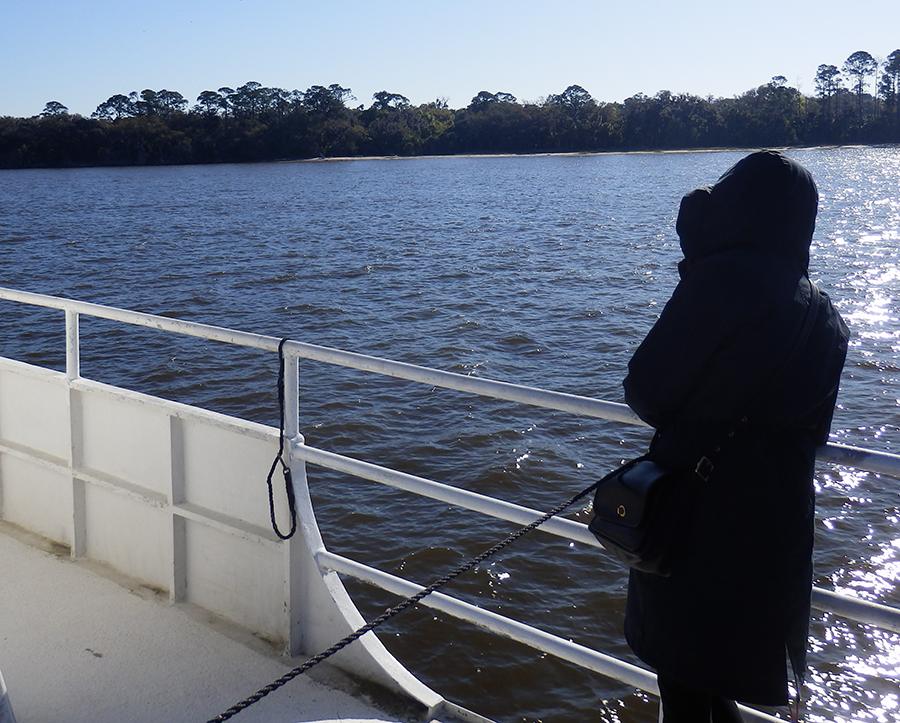
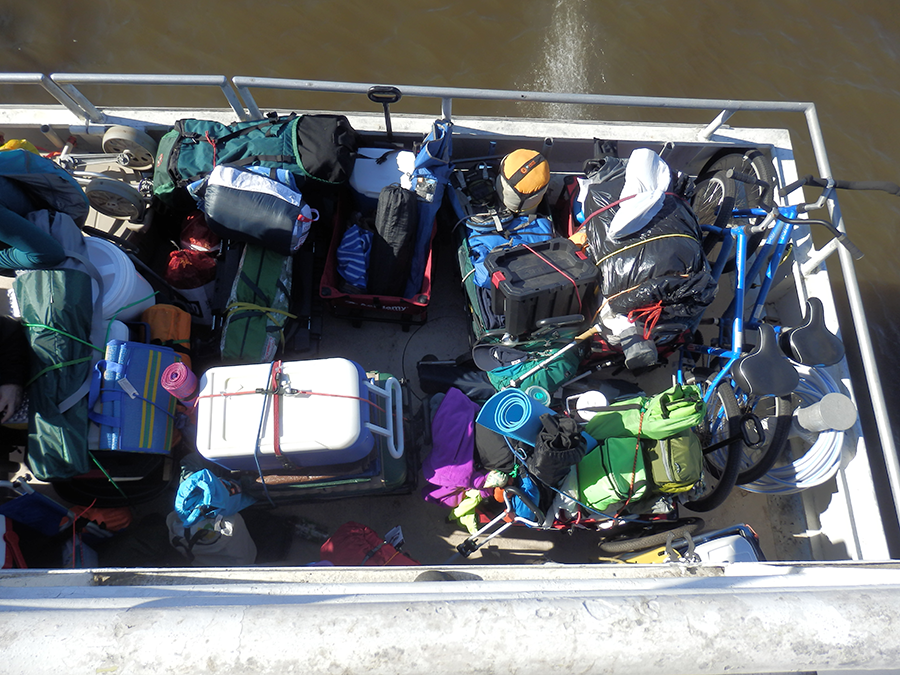
All that said, it is well worth the effort. It is tough to “get away” these days. Phones have access at even my most remote camping spots (if the wind blows the right way), so at camp I’ll turn my phone onto airplane mode and only use it as a camera. News of the outside world is rarely welcome and the distraction takes me away from the reason to be there – mental calm, reflection, focus.
Cumberland Island is a great place for such activity. Even if it didn’t have miles of mostly deserted beaches, the forest of live oaks and saw palmettos is lovely.
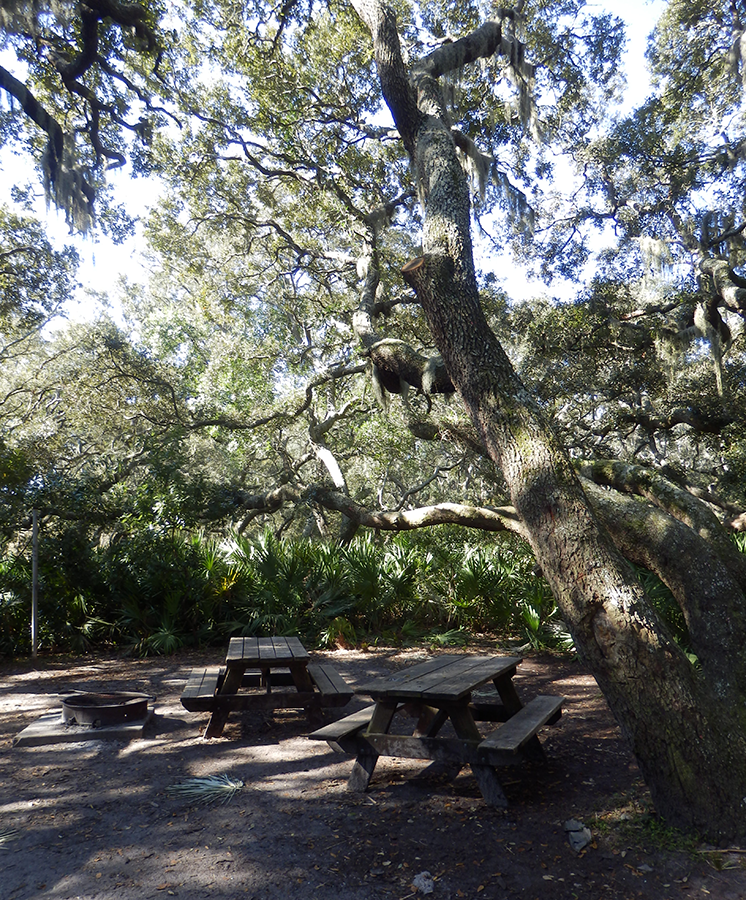
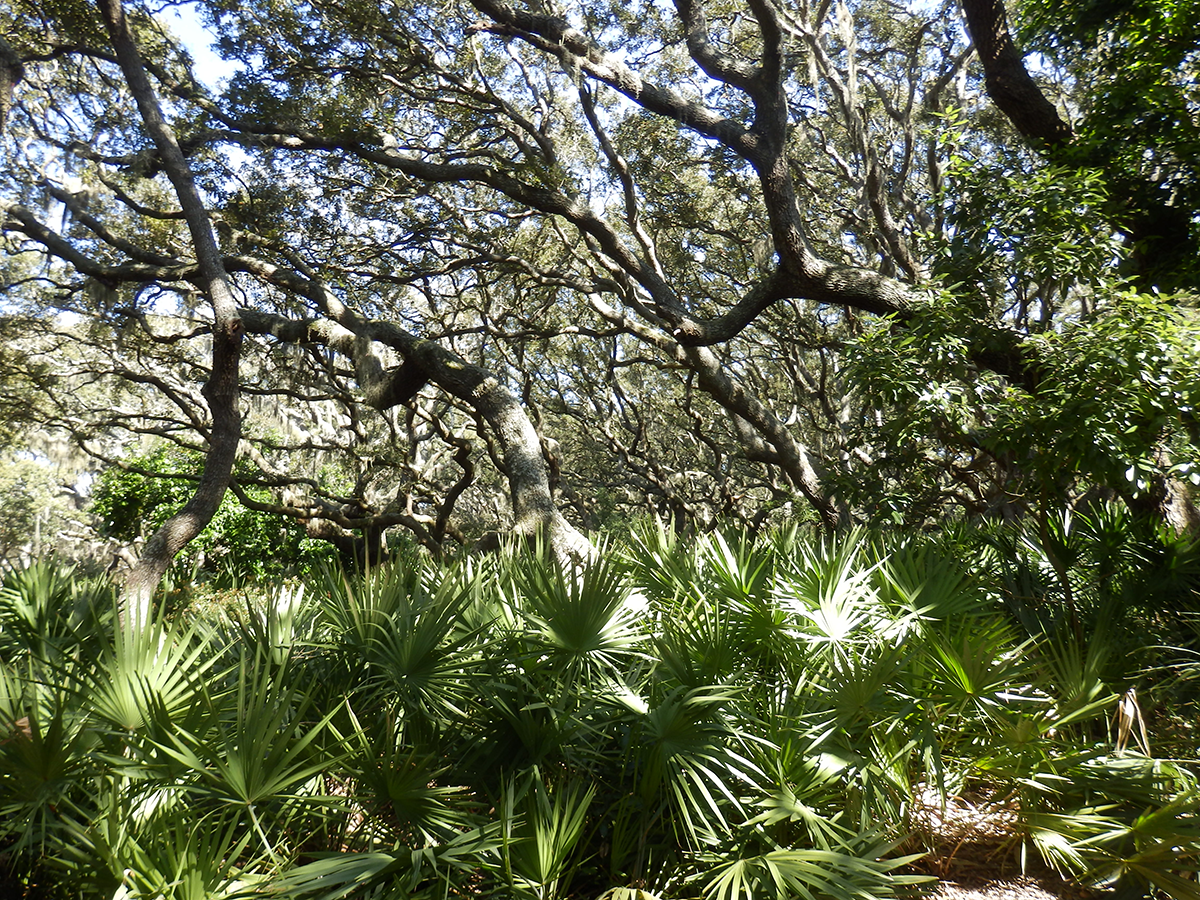
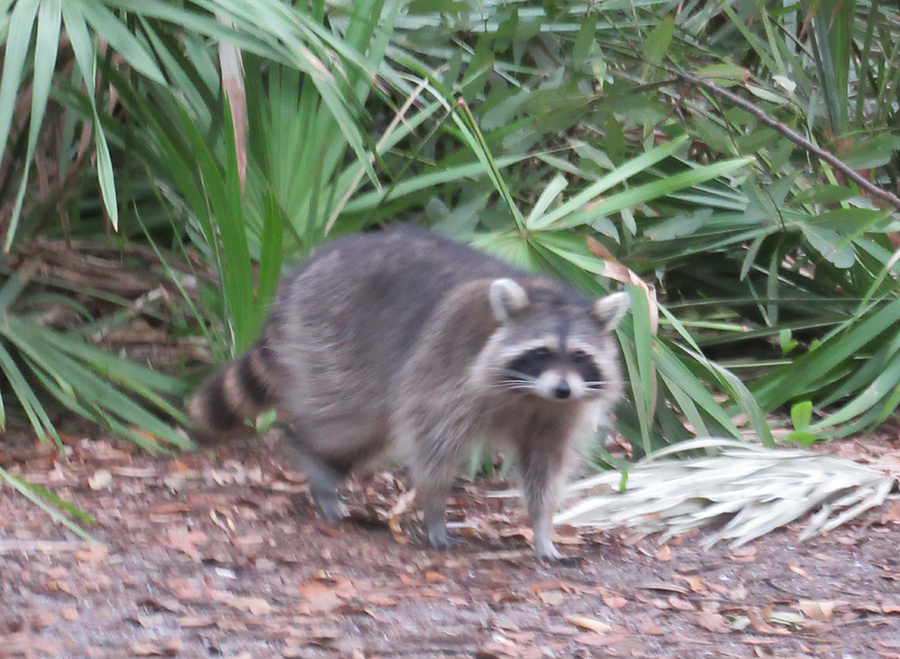
The branches leaning away from the sea host a ton of Spanish moss, resurrection ferns, aerial plants, and the occasional critter. Always secure camp against invasion, even if you’re just stepping away for a minute. The raccoons can get into just about anything and the nearest store is a ferry ride back (assuming you haven’t missed the last one of the day). We usually rest the bench of the picnic table atop the lid of the cooler, and lock everything else in a bin with heavy latches. If you’re inexperienced dealing with such beasts you’ll be amazed at what they can get into.
The beach is only a few dozen yards from Sea Camp. Just trek past the ever-present pile of horse dung and the occasional washed-up buoy…
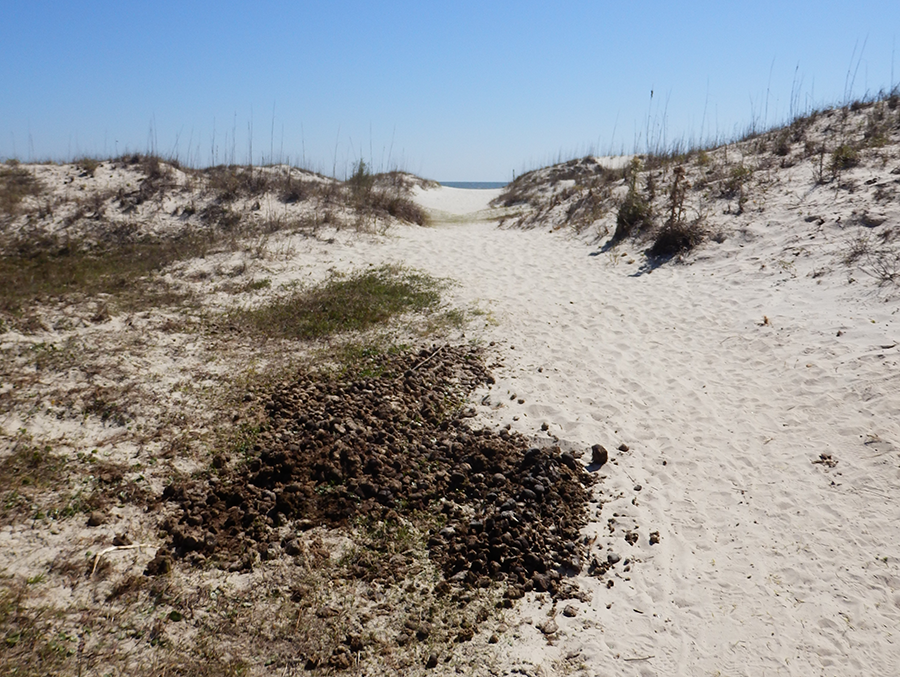
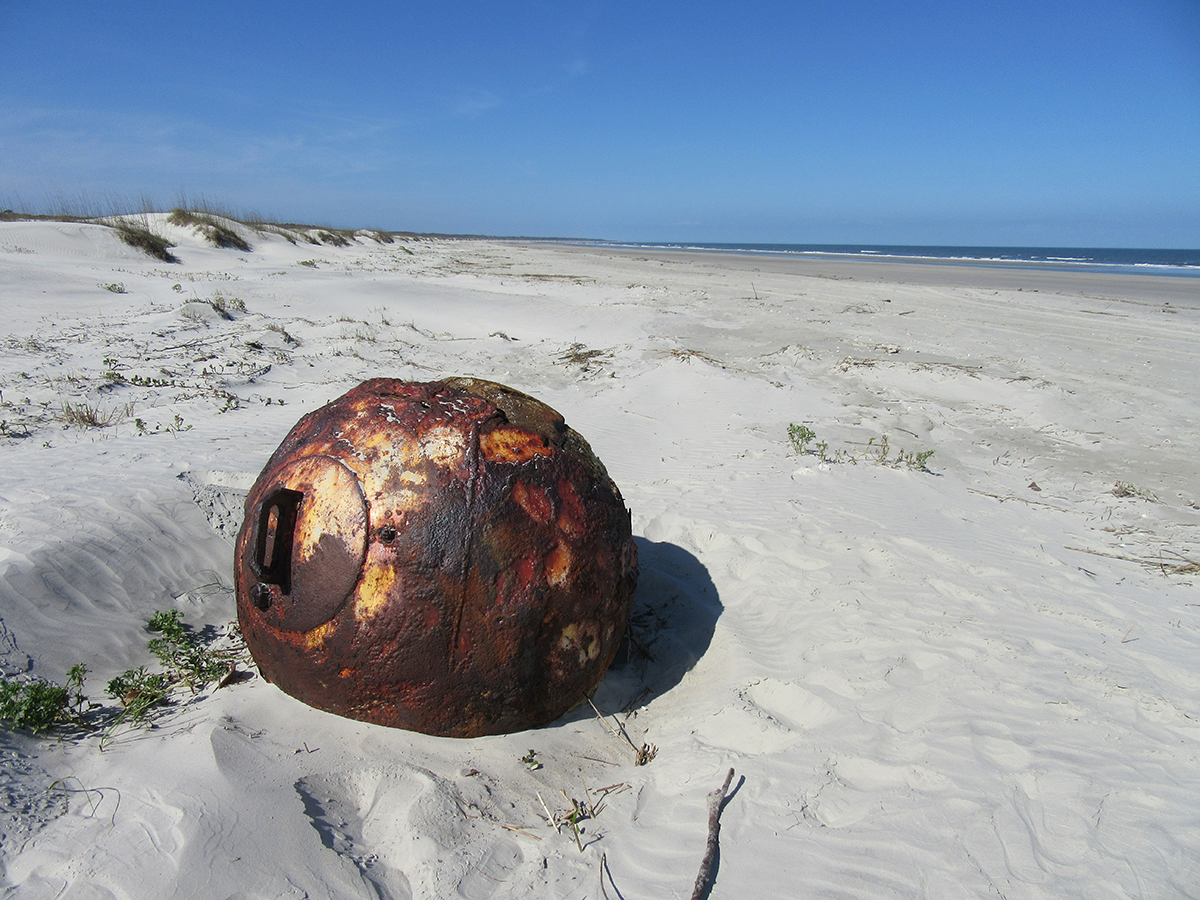
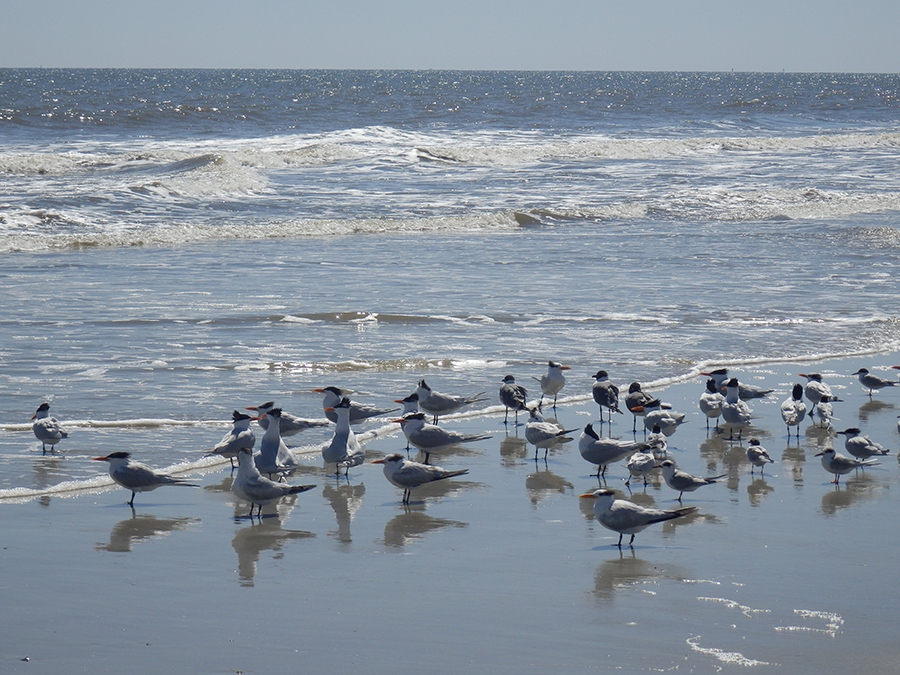
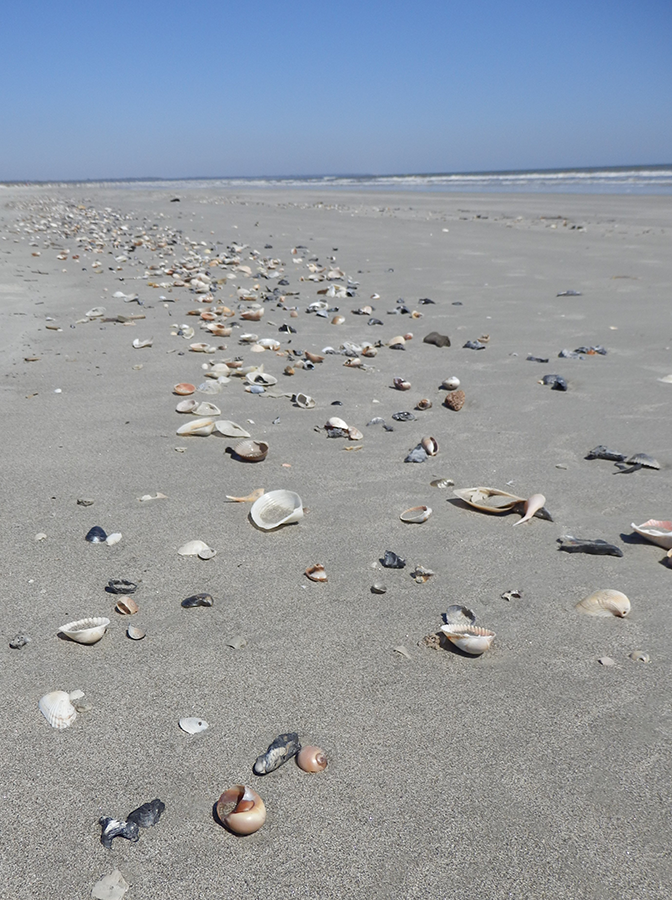

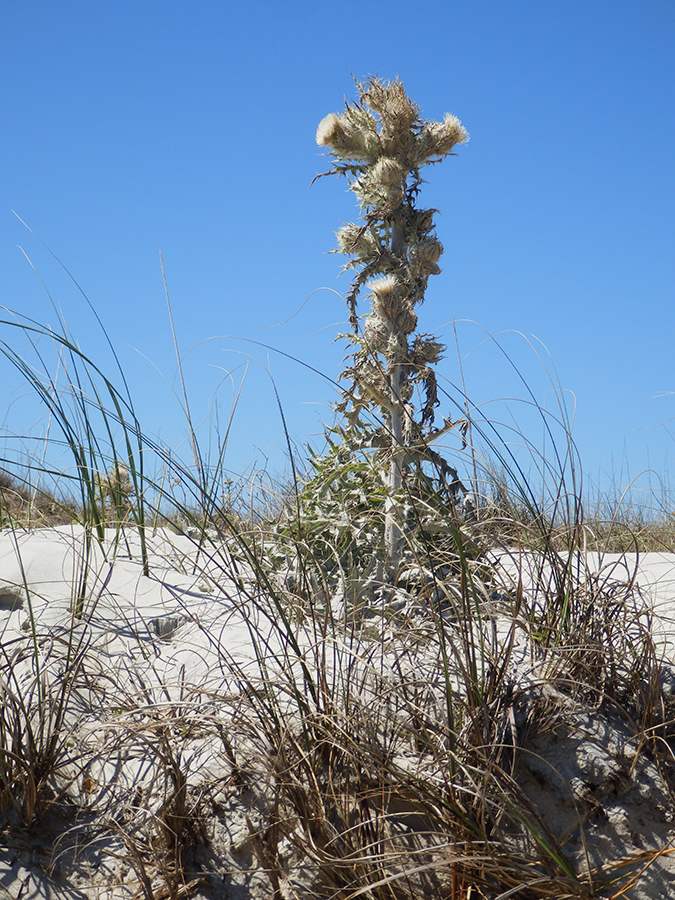
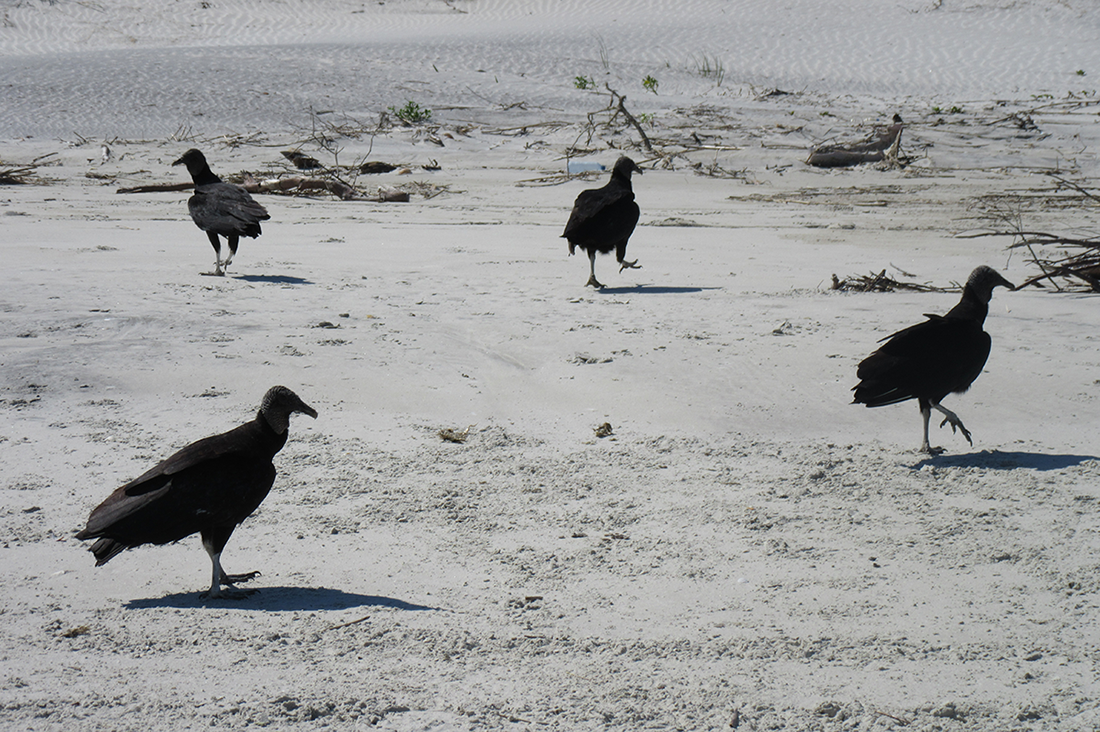
We spied quite a few black vultures and turkey buzzards feasting on the remains of beached stingrays up and down the beach.
Near the south tip of the island is a man-made jetty to protect the mouth of the St. Mary’s River. Just beyond, a huge variety of birds hang out on an area labeled “Pelican Banks” on the park’s map.
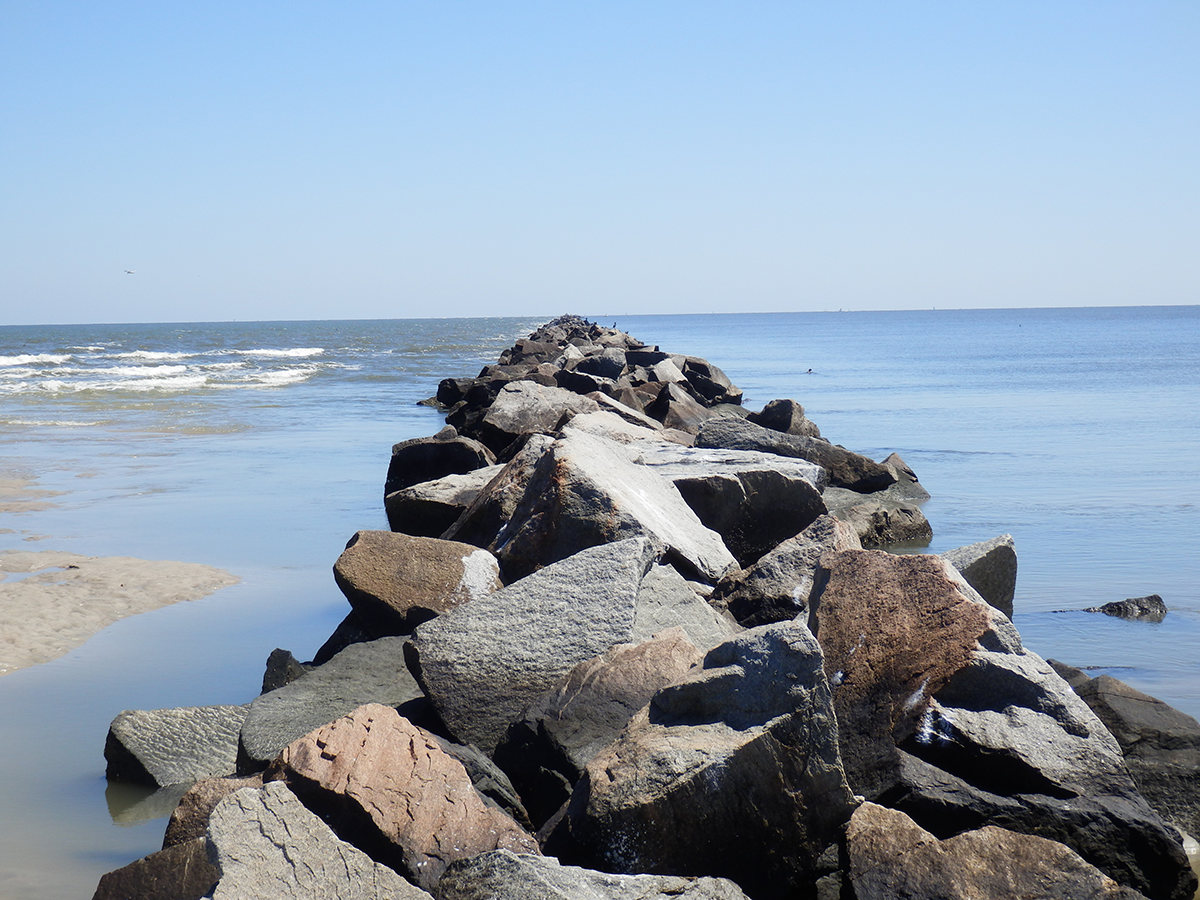
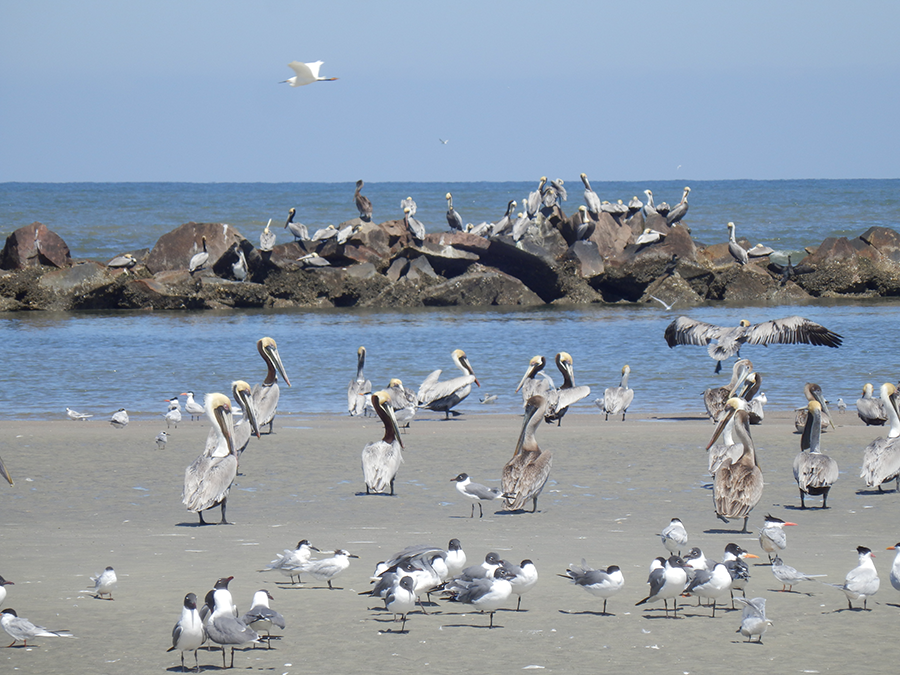
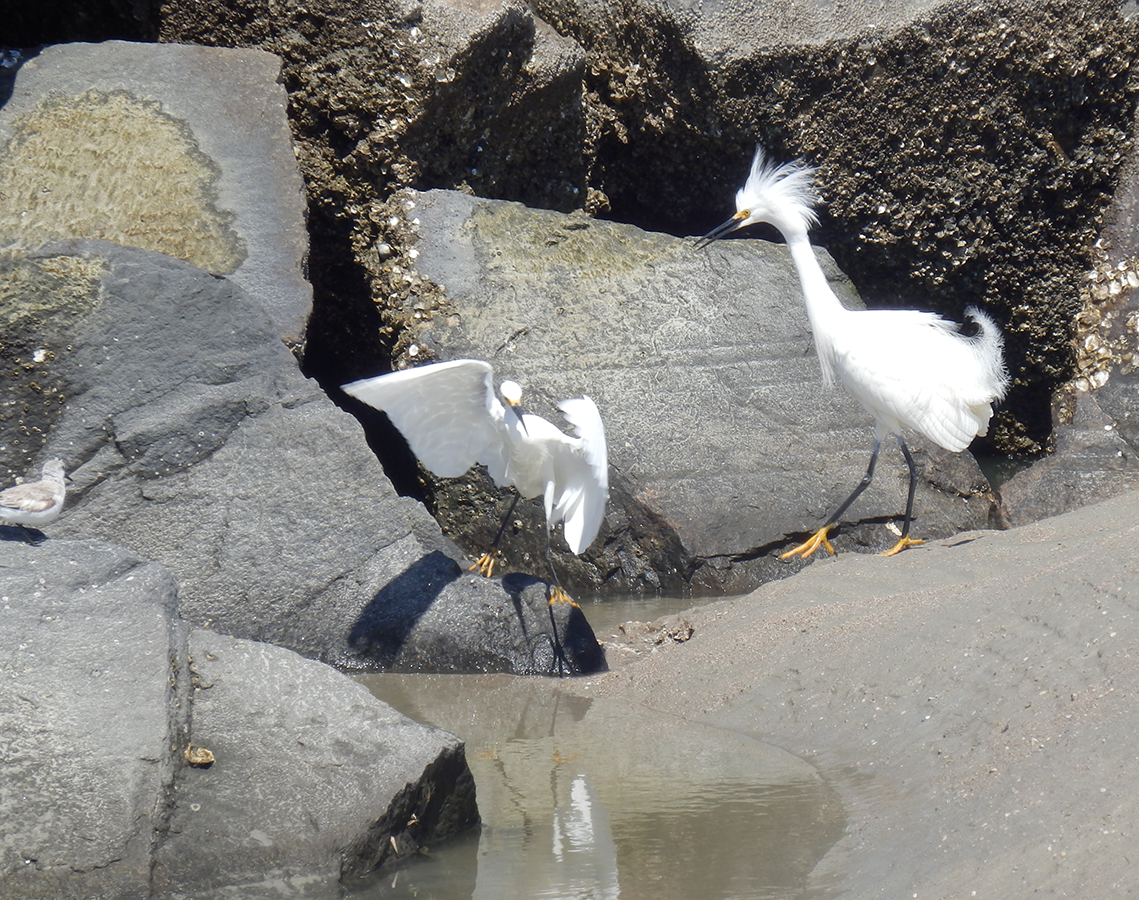
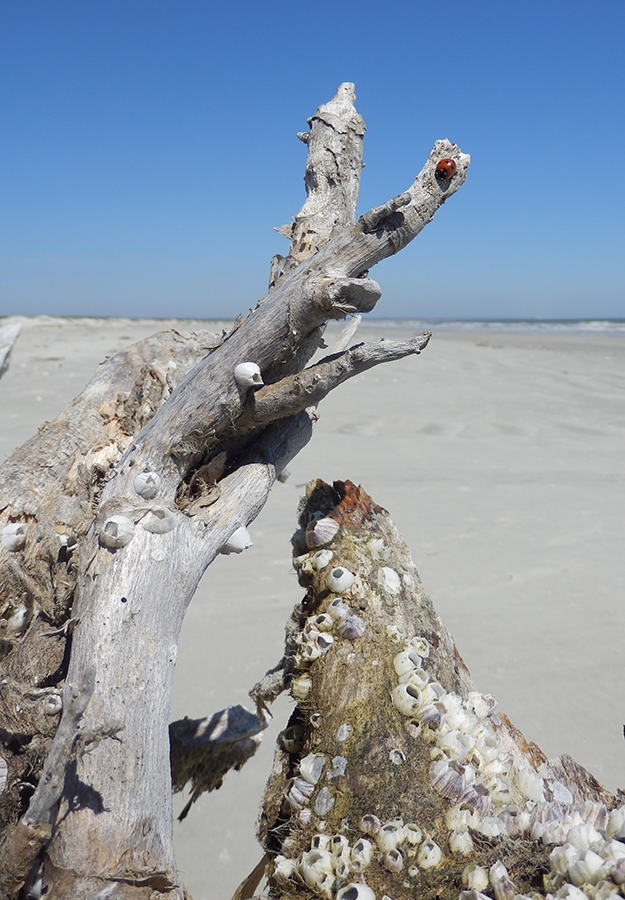
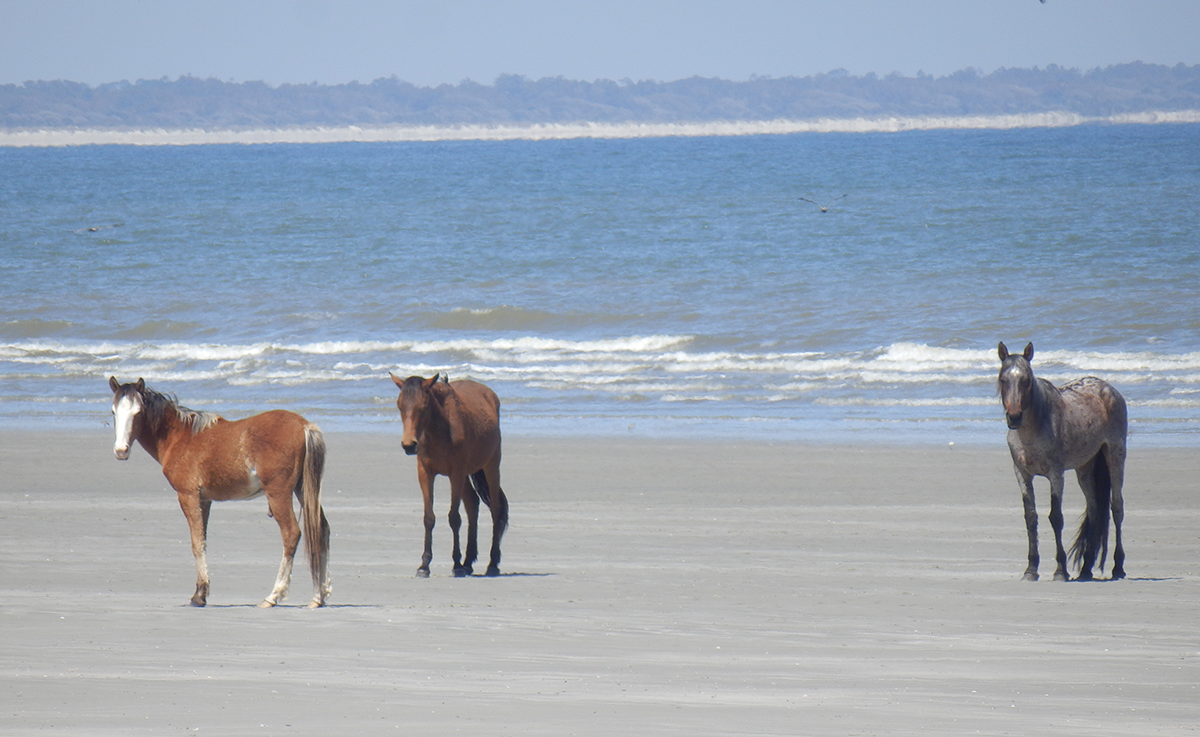
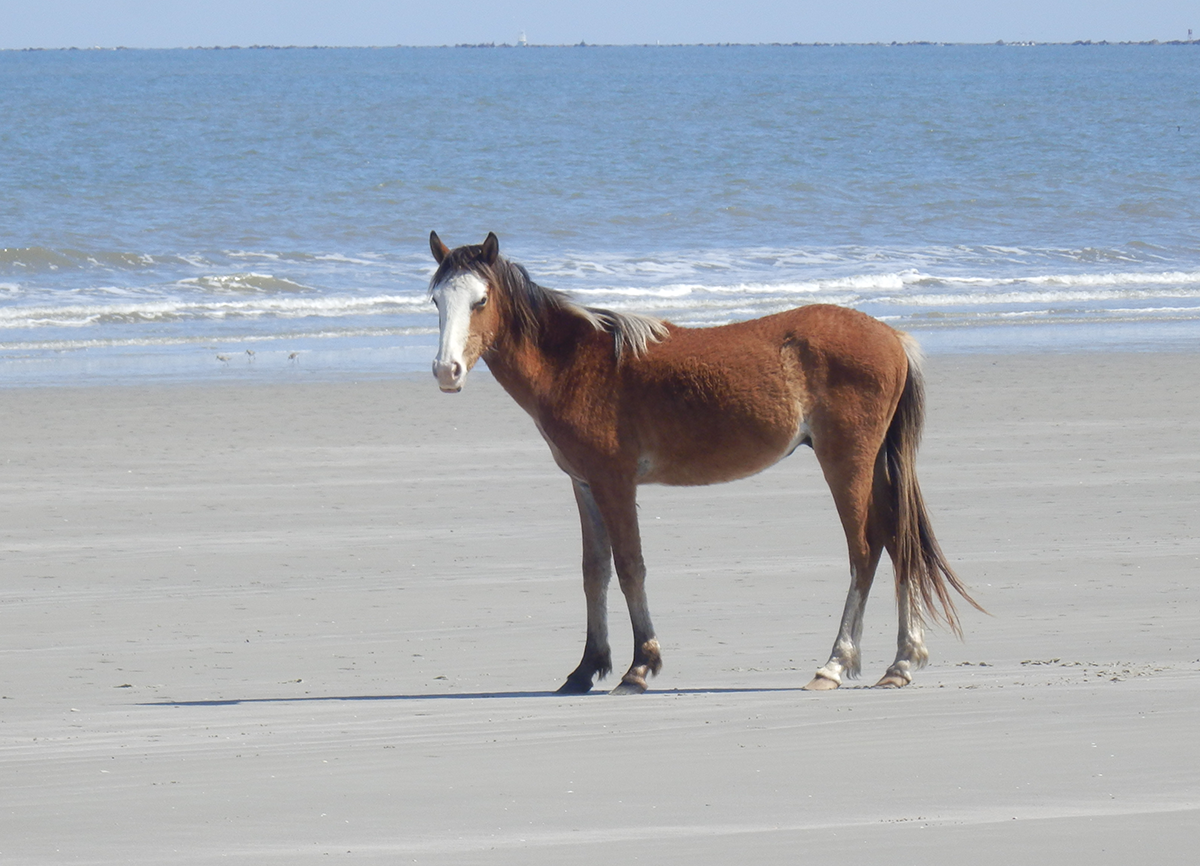
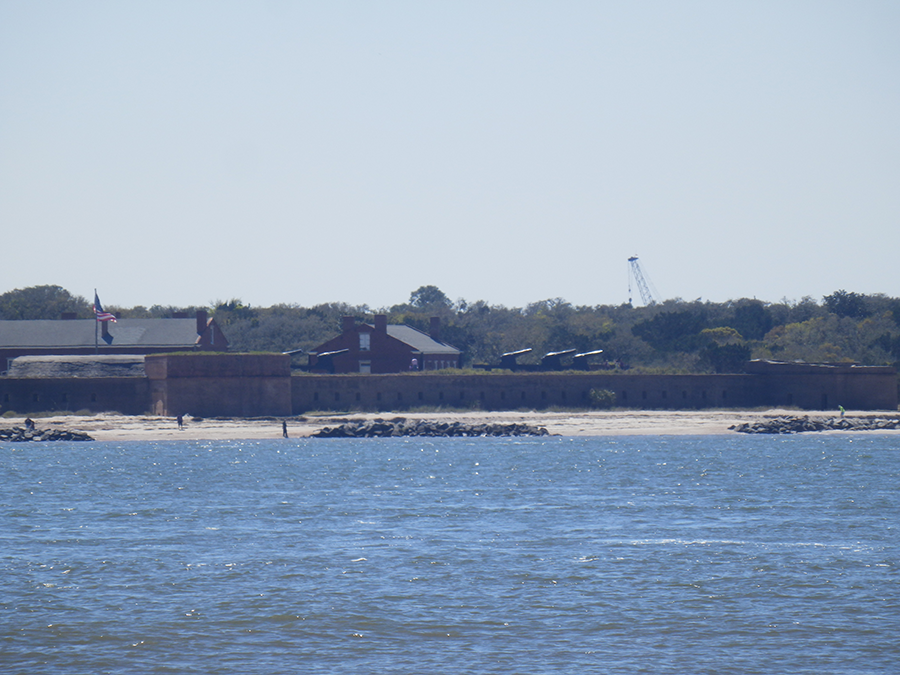
Just south of Cumberland Island is Amelia Island, on which is Fort Clinch, a Florida state park. We’ve camped there as well, but it is an hour drive due to the circuitous route. People paddle across from there in kayaks faster than that.
The west side of the island overlooks inland waterways and marshes. Walk far enough south on that side and you might make it over to Raccoon Key, a little wooded rise surrounded by marsh. The path, depending on the level of the tide, features thousands of dime-sized crabs that flee as you near. Trap one of them, however, and he’ll threaten you with his over-sized claw. The west side of the island is also a great place to watch the sunset. Linger after it goes down and you get the best part of the light show.
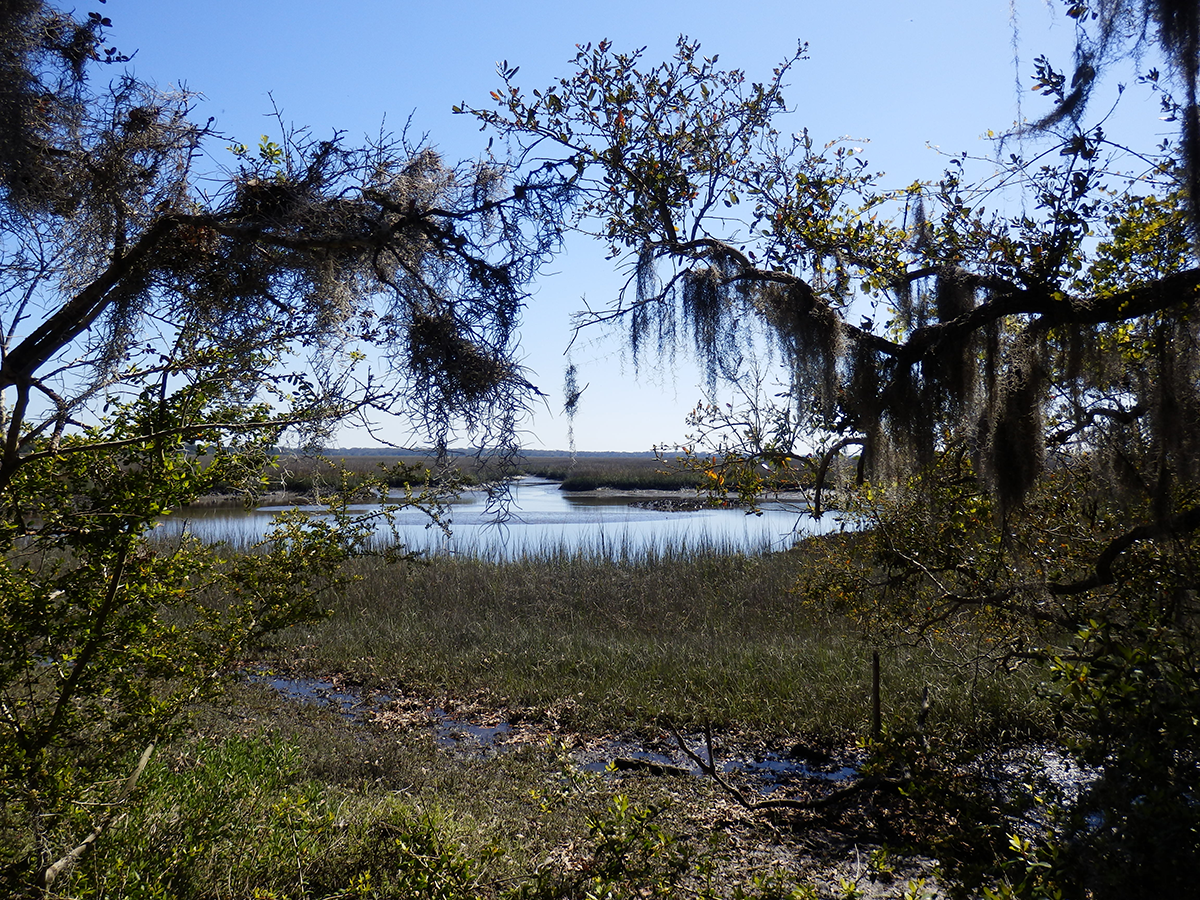
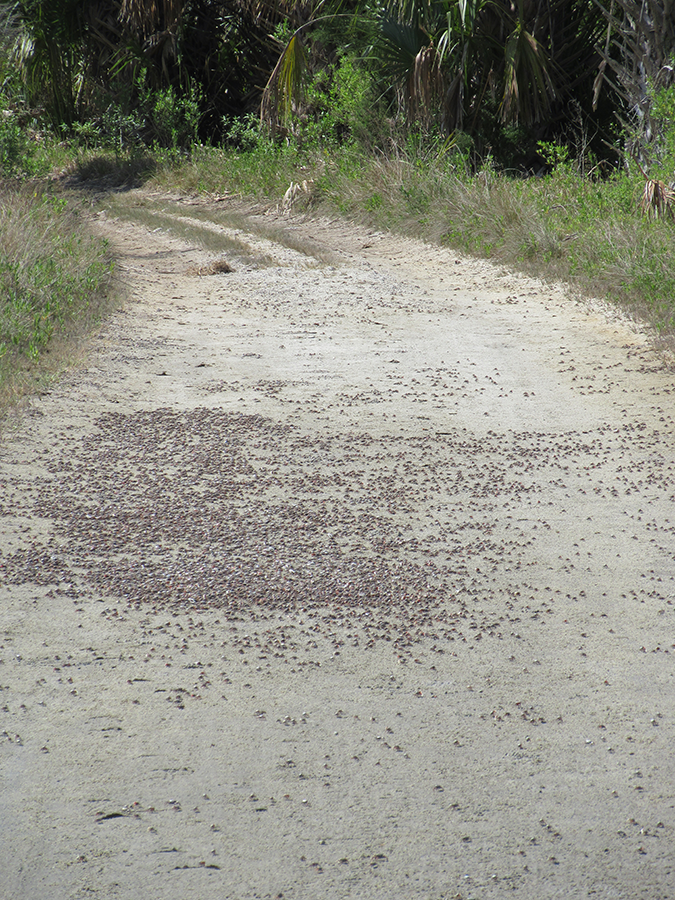
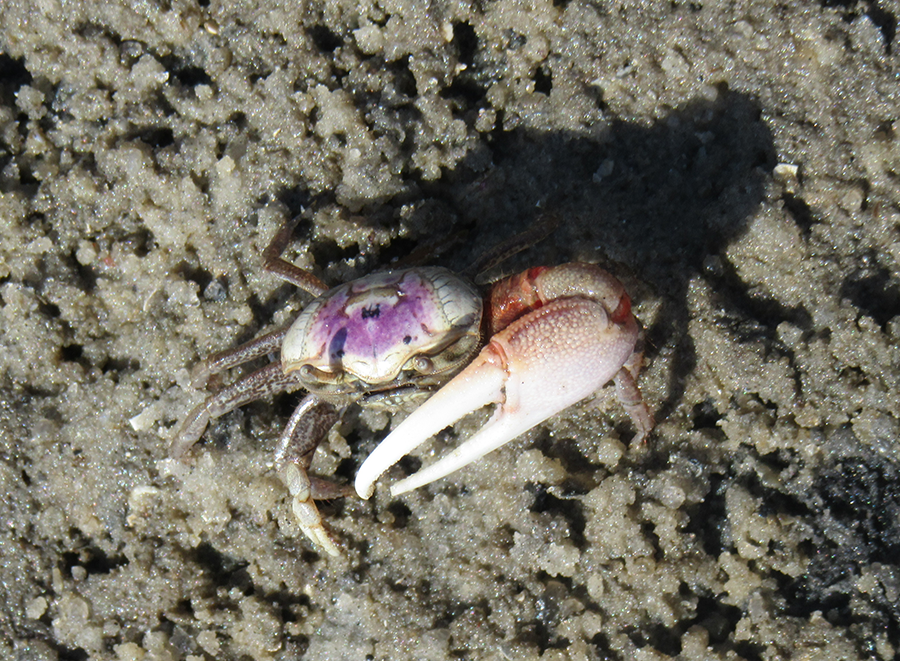
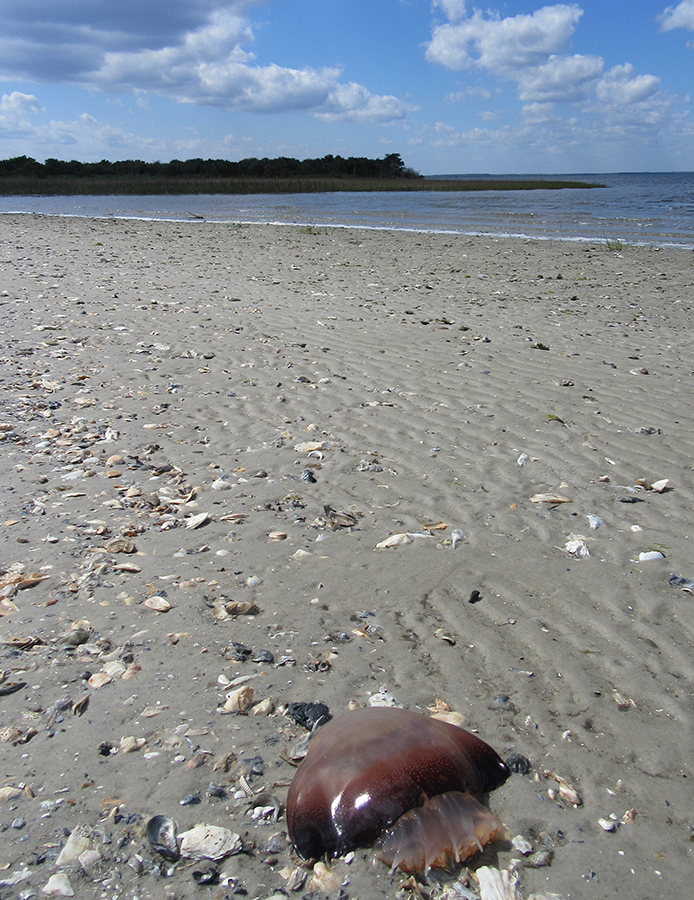
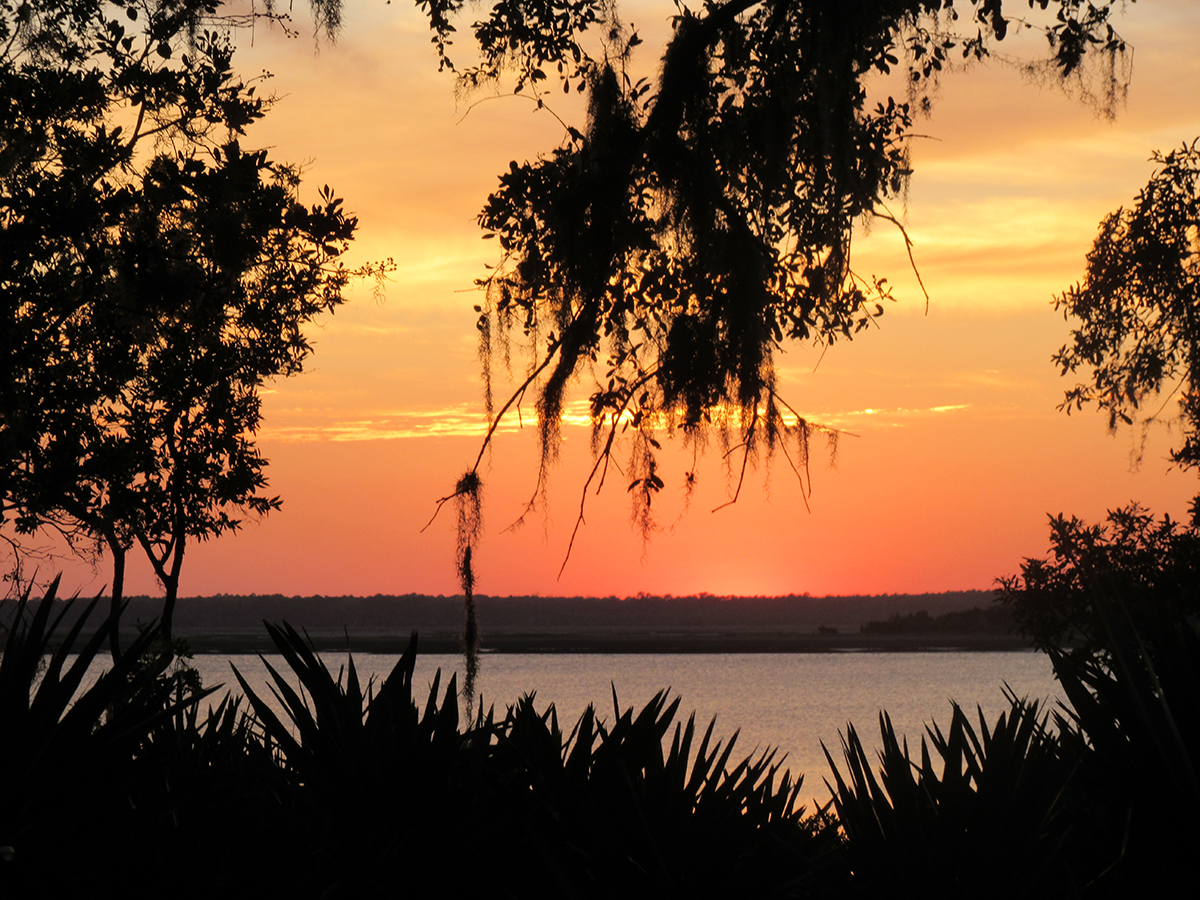
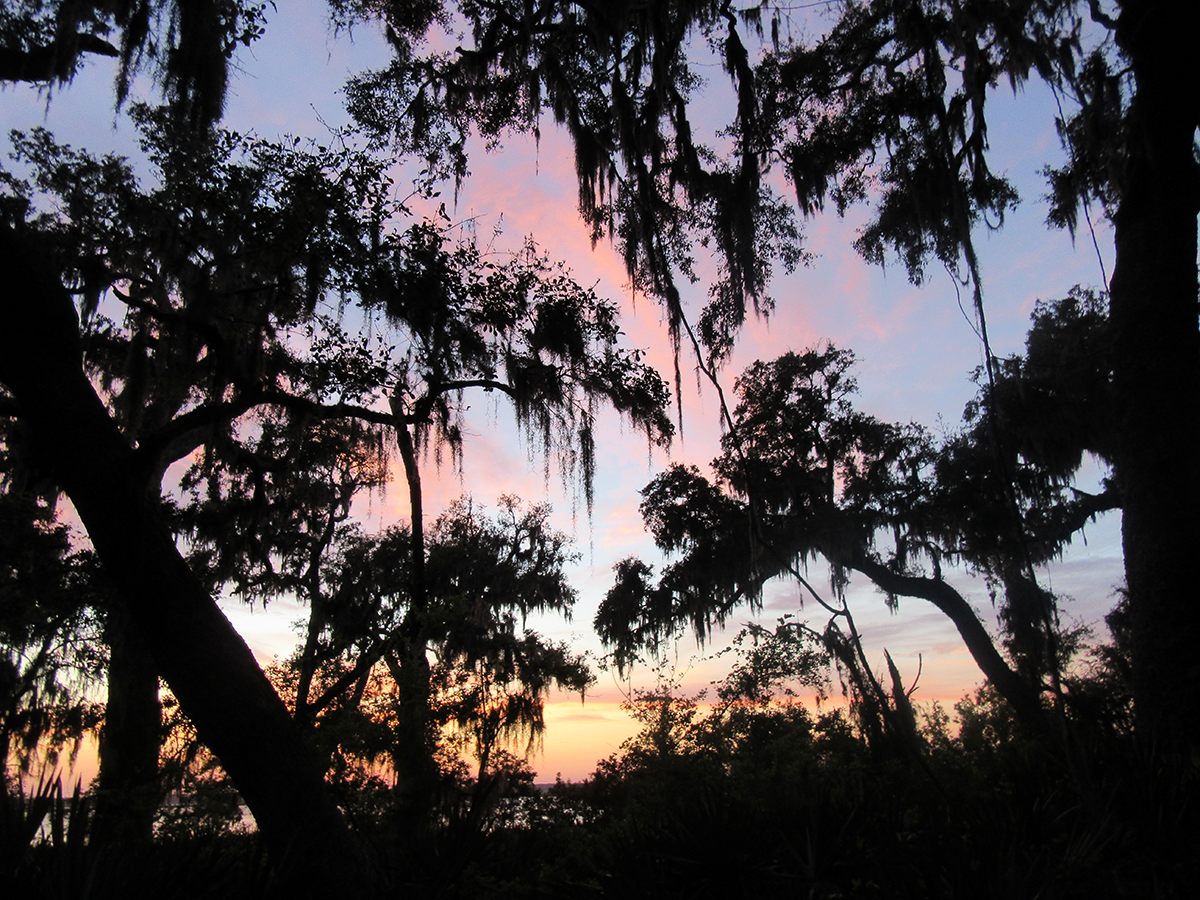
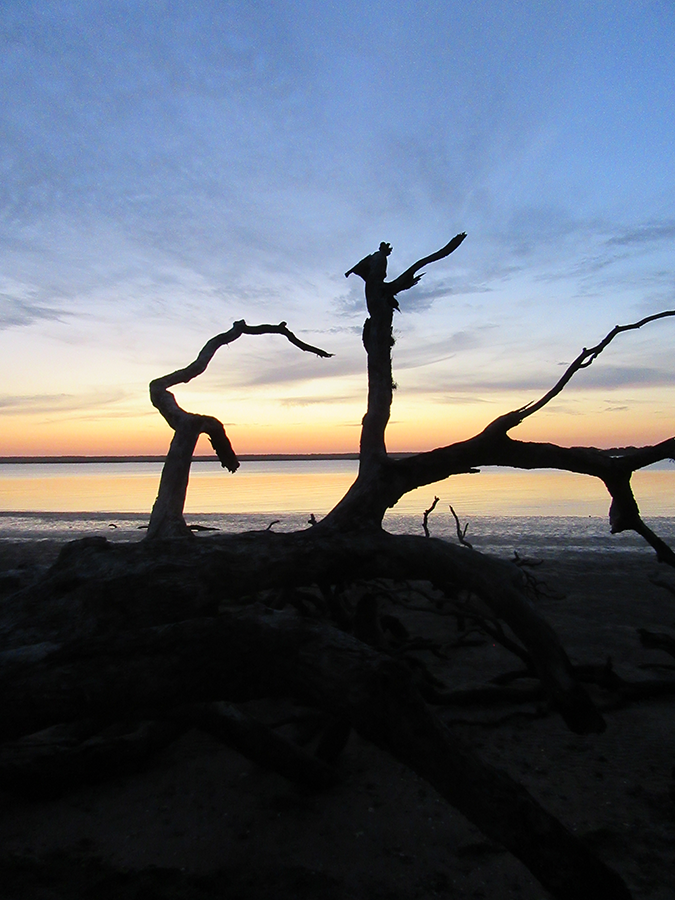
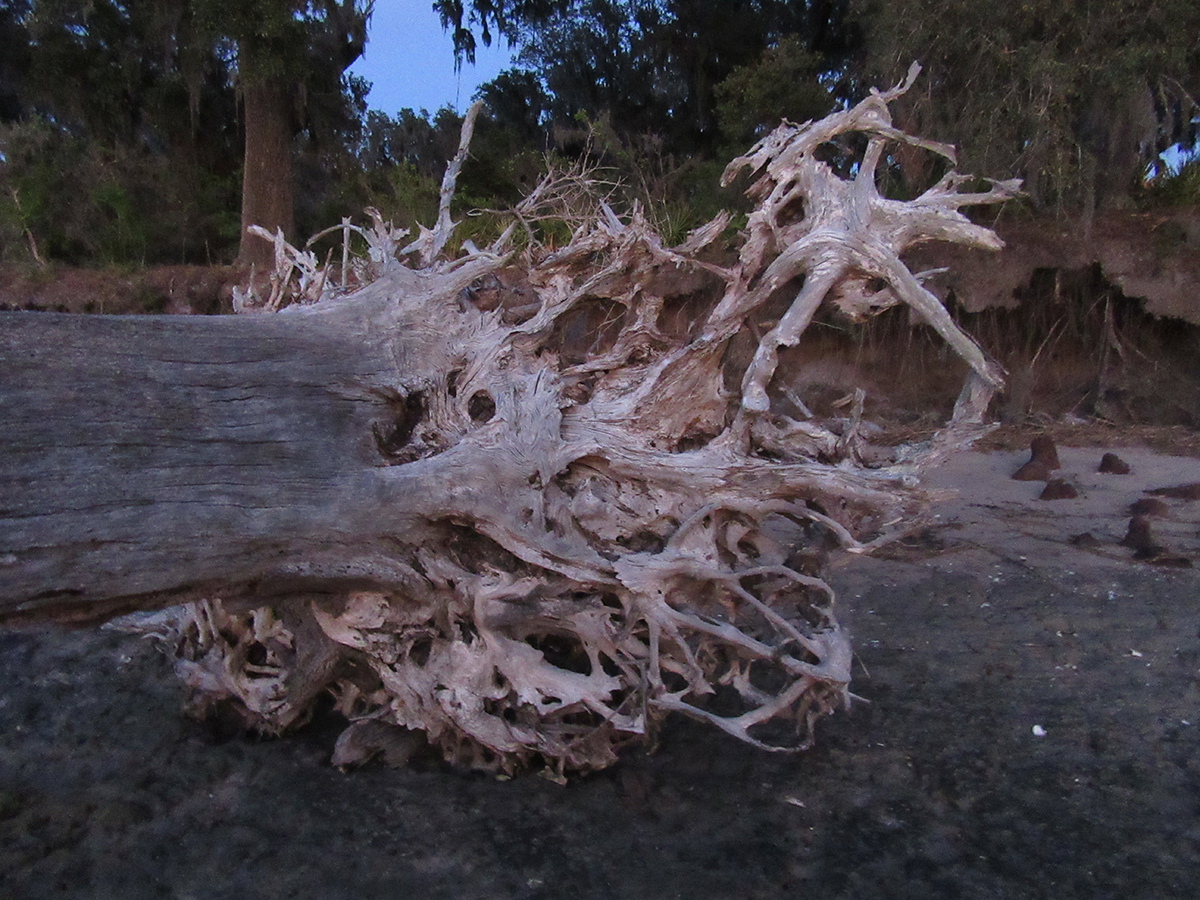
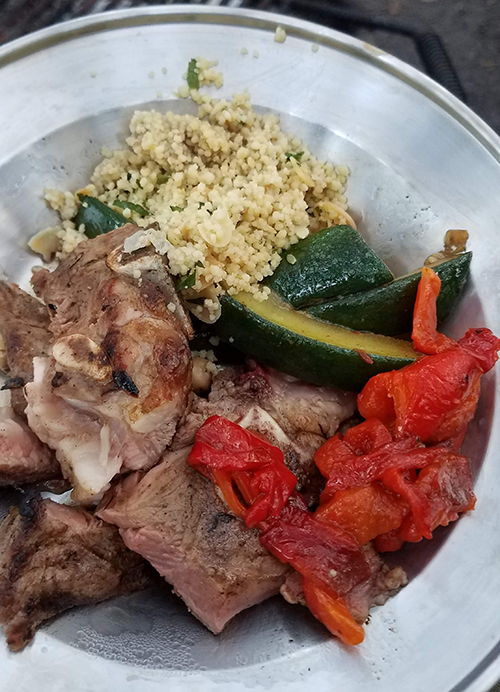 Someone on facebook asked what was on the menu. On our first night, we had grilled lamb steaks, a couscous salad, grilled red pepper, and zucchini sauteed in bacon fat.
Someone on facebook asked what was on the menu. On our first night, we had grilled lamb steaks, a couscous salad, grilled red pepper, and zucchini sauteed in bacon fat.
On the next night, we had a selection of pork and lamb sausages, mashed potatoes with goat’s cheese, padron peppers sauteed in bacon fat (we forgot the olive oil), and the leftovers from the night before.
Lunches were a variety of cured meats, cheeses, olives, peppers, bread and crackers, with chocolate covered salted caramel and chocolate covered almonds for dessert.
Breakfast was a simple cheese and pepper omelette and bacon on the first day. Day two featured eggs and chorizo.
We packed a few of those little mini cartons of wine, as well as a bit of rum in a mason jar.
Next time, I’d pack more stuff overall. We had room in the cooler and the hike from the ferry wasn’t bad with the wagon rented at the ranger station, along with our rolling bin.
A short walk from the pier and Sea Camp is the Ice House Museum, a small space that tells snippets of the island’s history. A short walk from there are the ruins of Dungeness, a grand mansion and several outbuildings once owned by the Carnegie family.
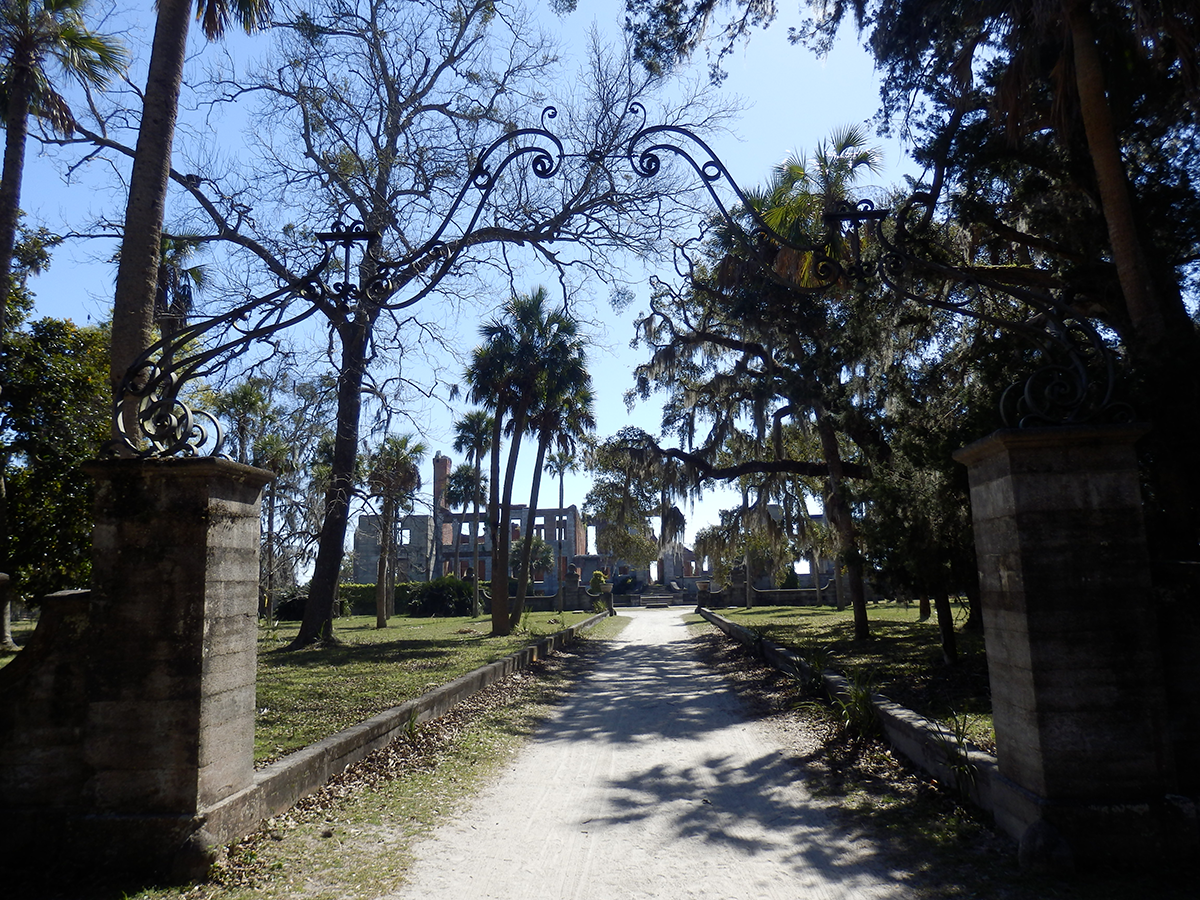
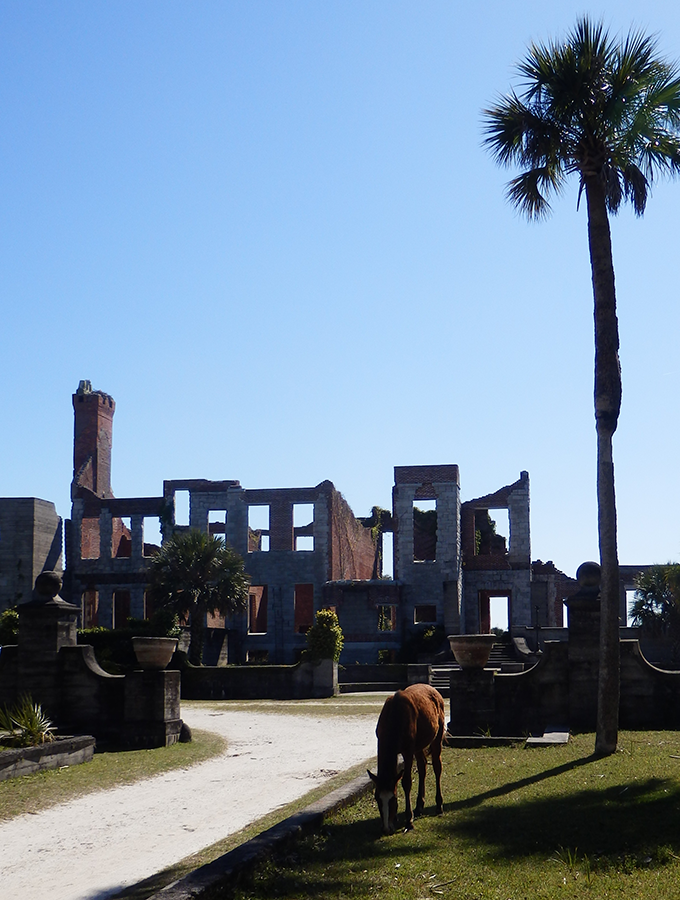
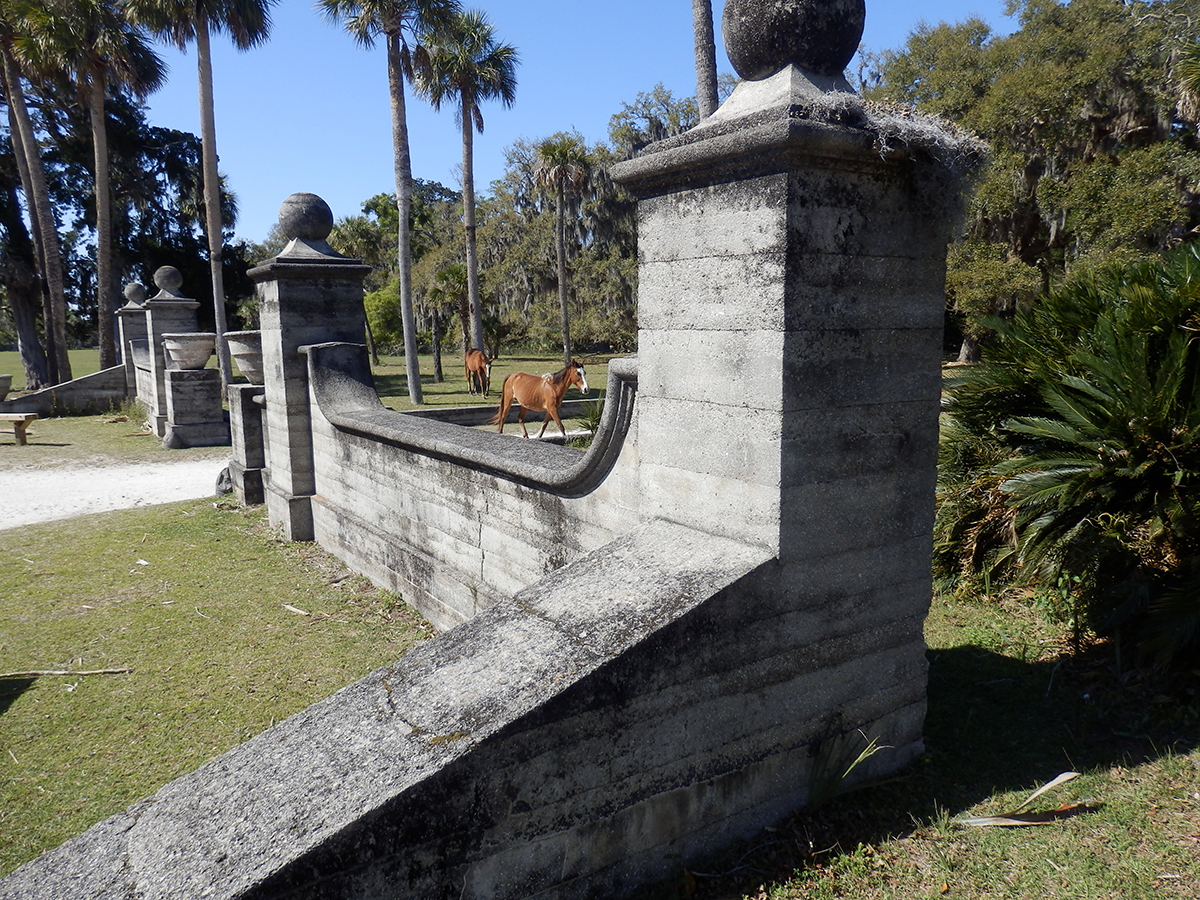
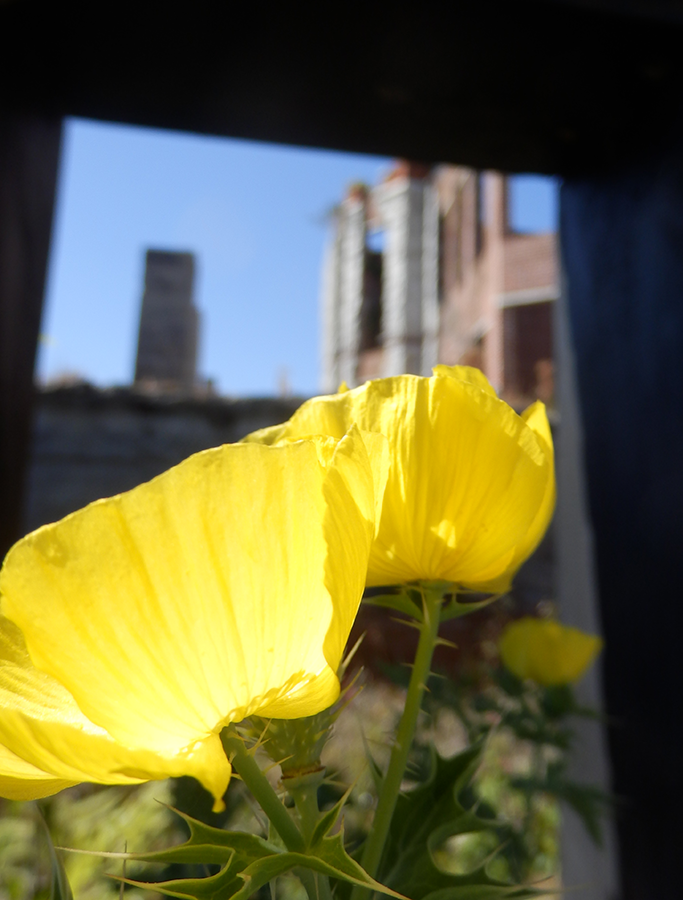
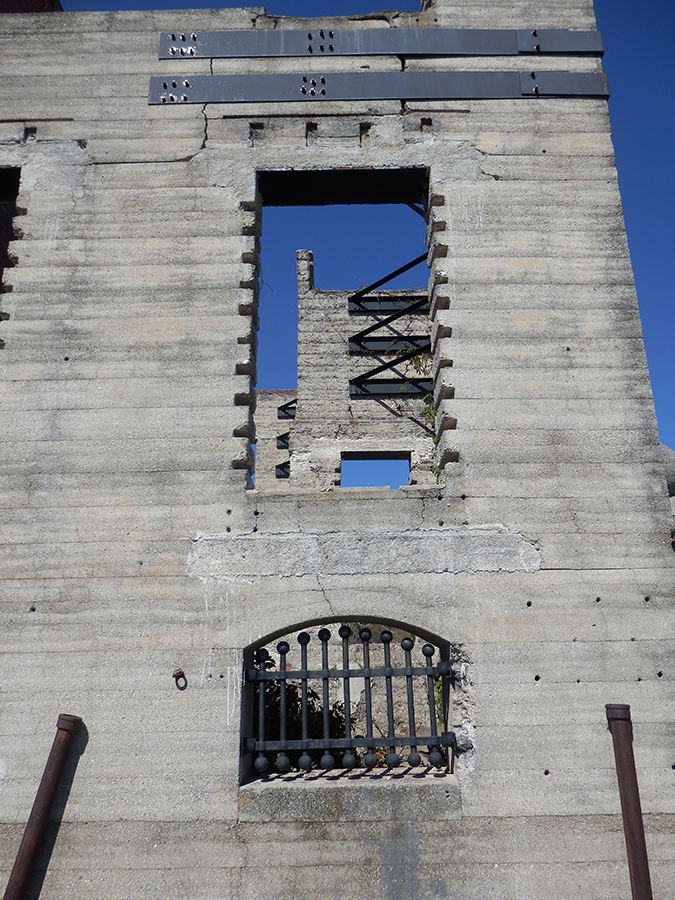
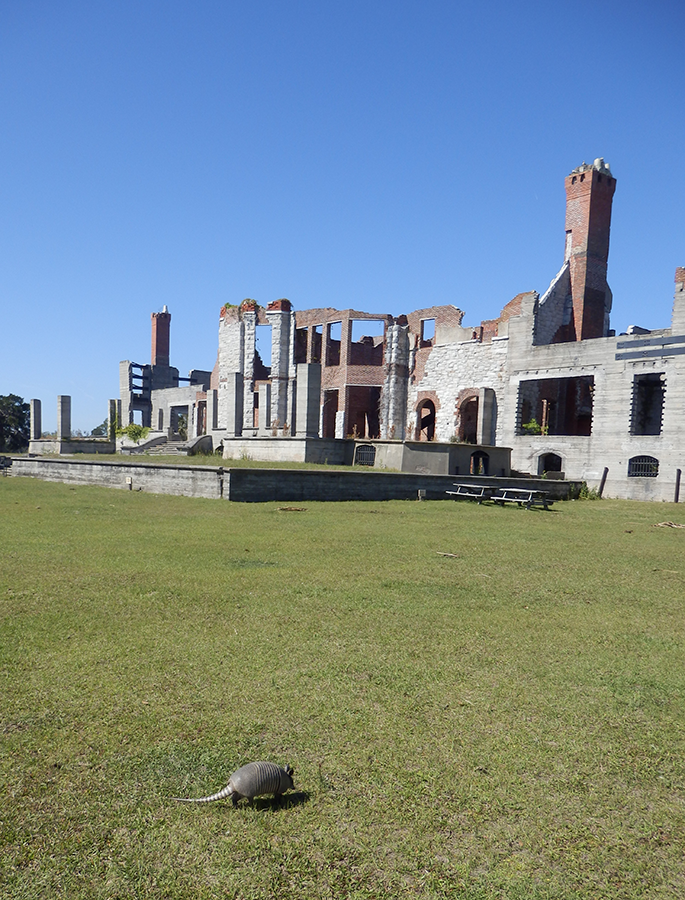
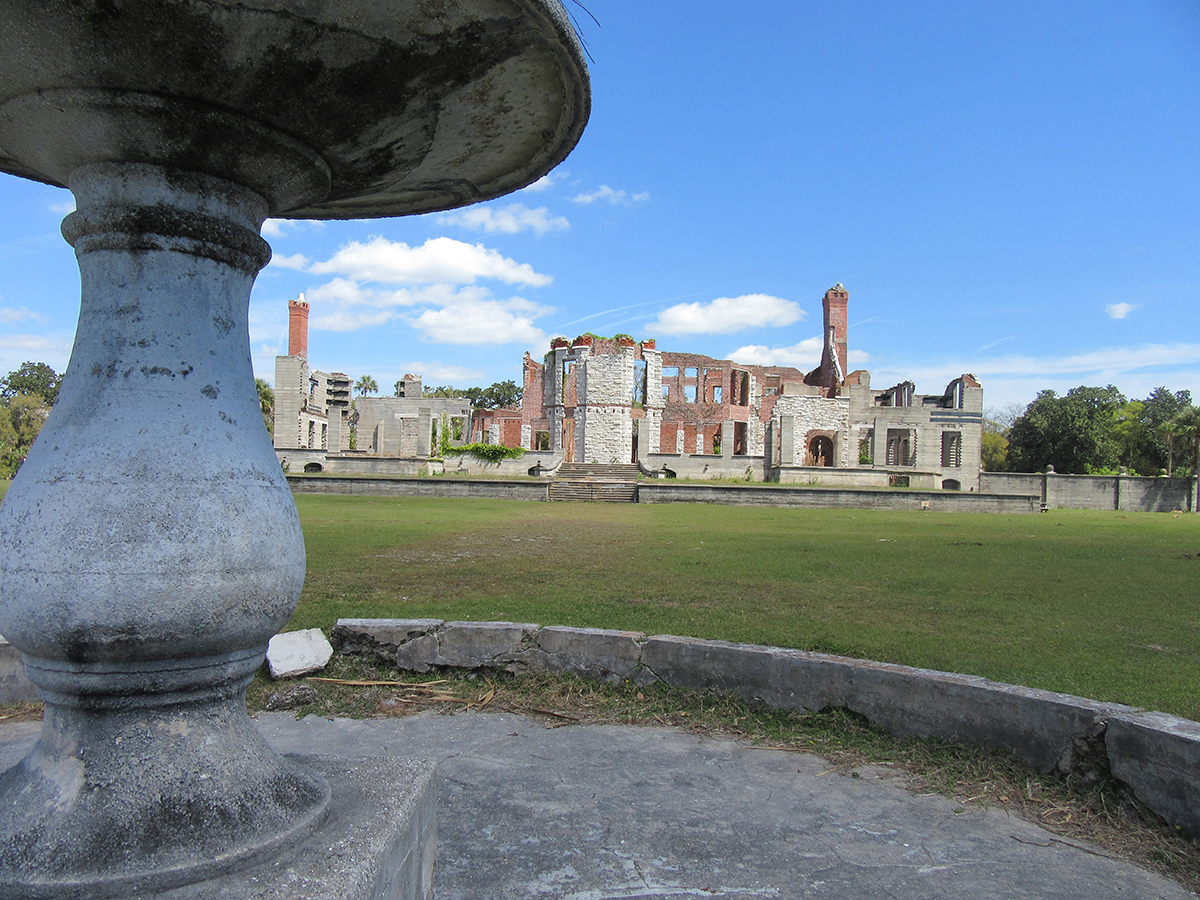
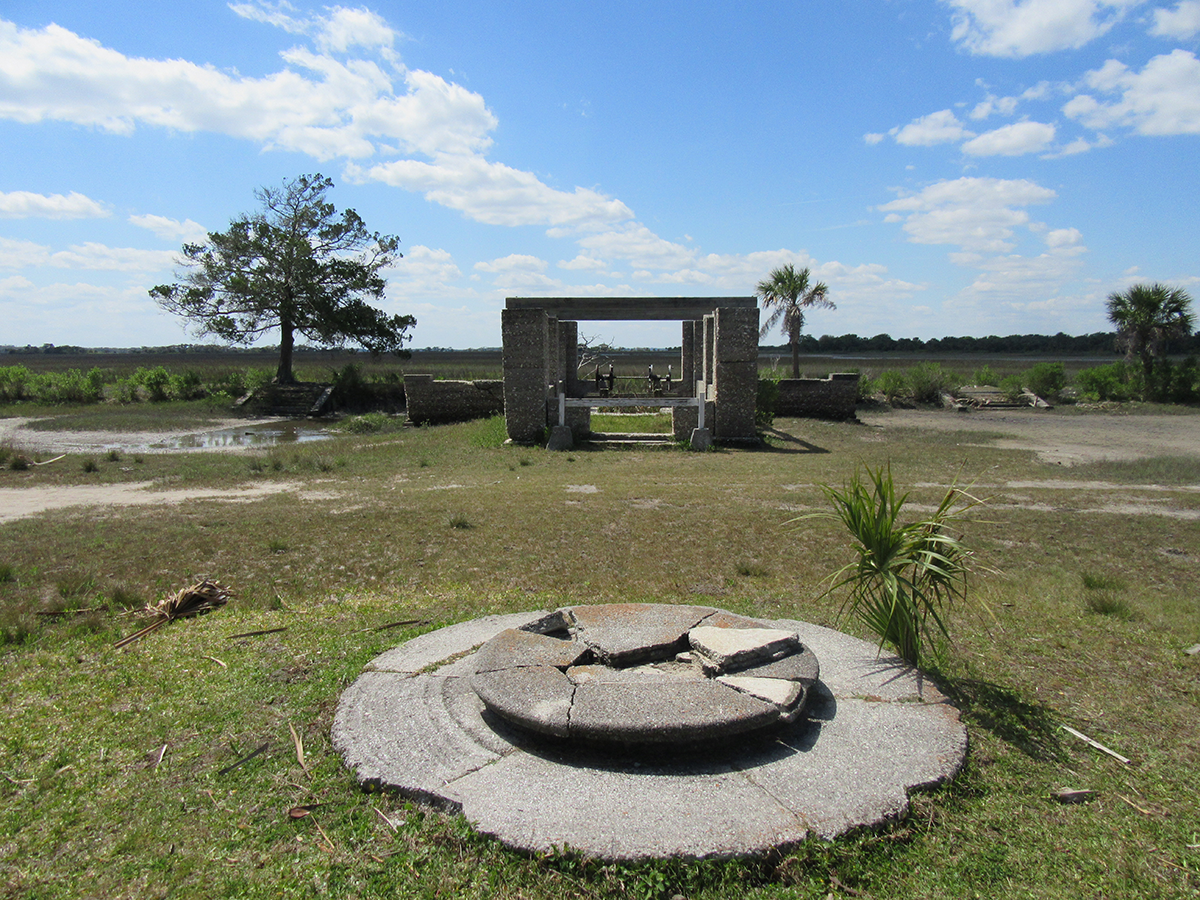
Around the ruins, you’ll frequently spot Cumberland Island’s famous wild horses. Spend enough time on the island and you’ll spot them everywhere – staring out at the sea, picking their way through the woods, or even blocking the path to your tent. You’re not supposed to approach them or feed them, as they are not domesticated at all. Once, we were walking up a road and three came running around the bend and slowed to trot past us, barely glancing at us. There is debate about whether they should be allowed on the island. They’re not native and damage the habitat. Sometimes they’re not in great shape themselves. They looked good this spring, but last time we were there the ones we spotted looked pretty rough.
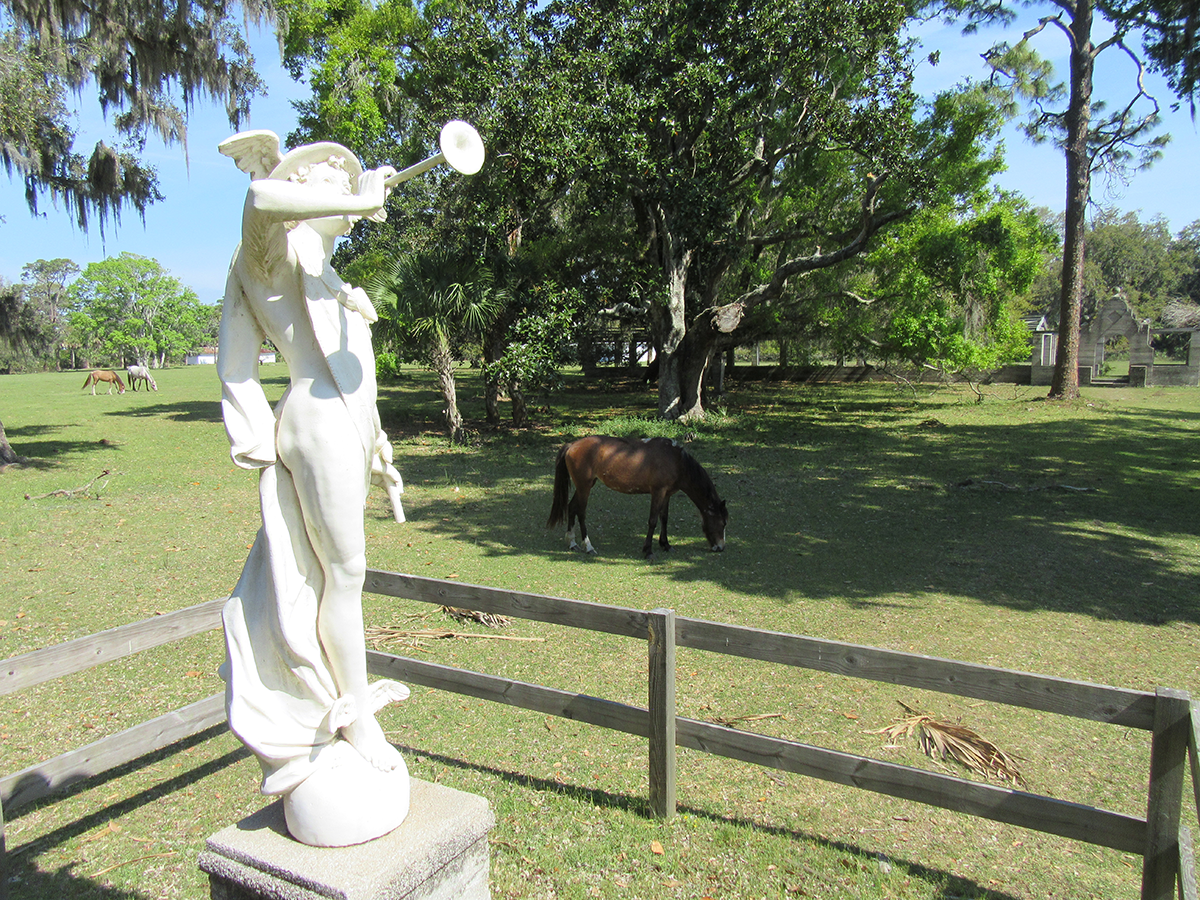
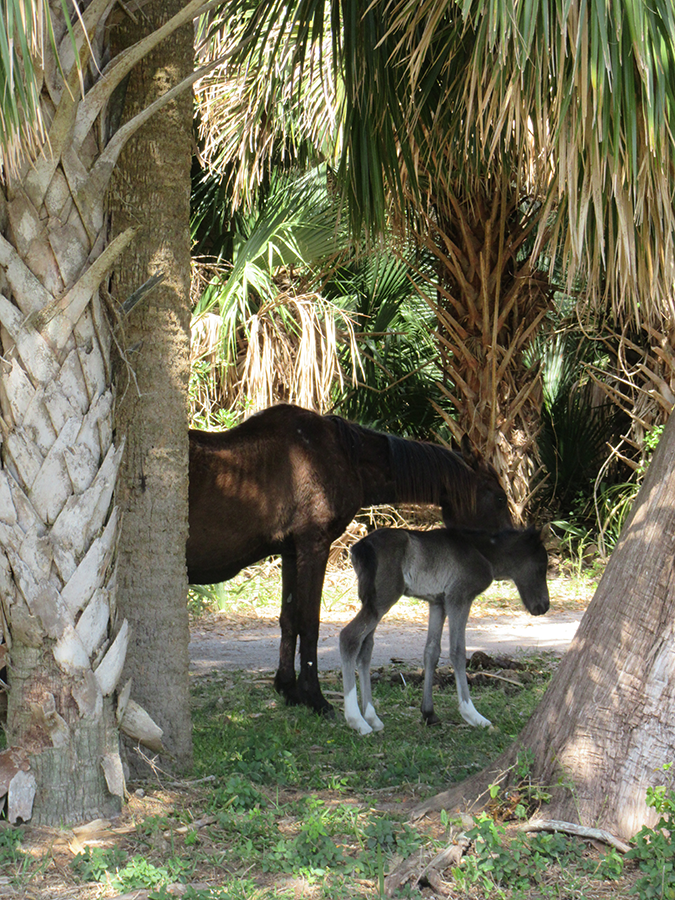
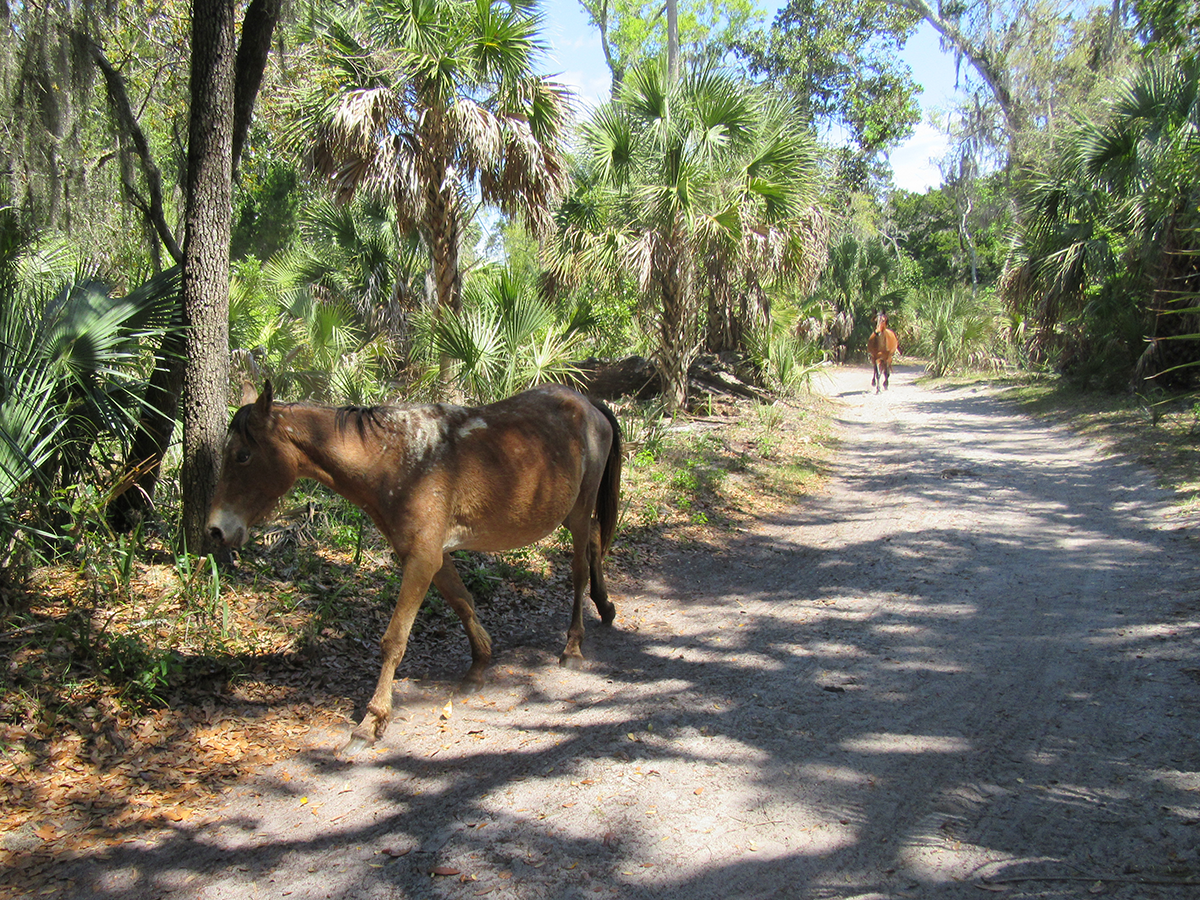
There is a lot more to see on Cumberland, but either you have to take a long walk, bike over randomly soft, deep sand, or pay for a tour. We coughed up the $45 each for an almost-all-day ride narrated by a knowledgeable, if not entirely “woke,” guide so that we could see the northern stretch of the island.
About halfway up the island is Plum Orchard, another mansion built by Canegie descendants. The building is mostly a museum now, though it does house the park’s volunteers. The stenciled linen wallpaper features the family crest. There are Tiffany lampshades and intricately carved wooden furnishings. A gun cabinet features dozens of drawers for different types of ammo. The indoor pool was some nine feet deep. But it was the decorative fixtures that caught my eye – mother of pearl pushbutton light switches and ceramic bathroom faucet knobs and crystal doorknobs and so on.
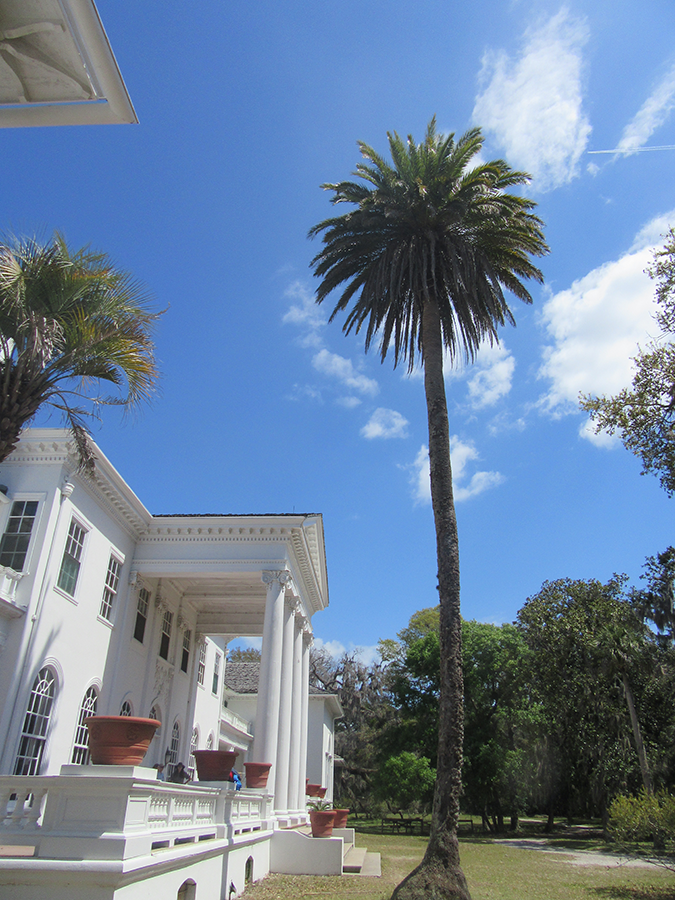

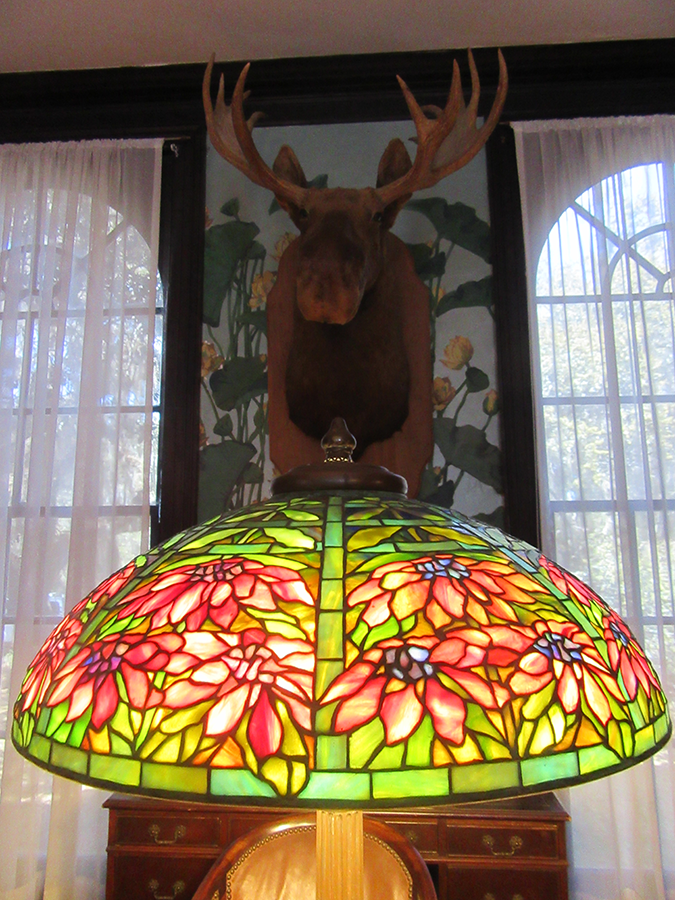
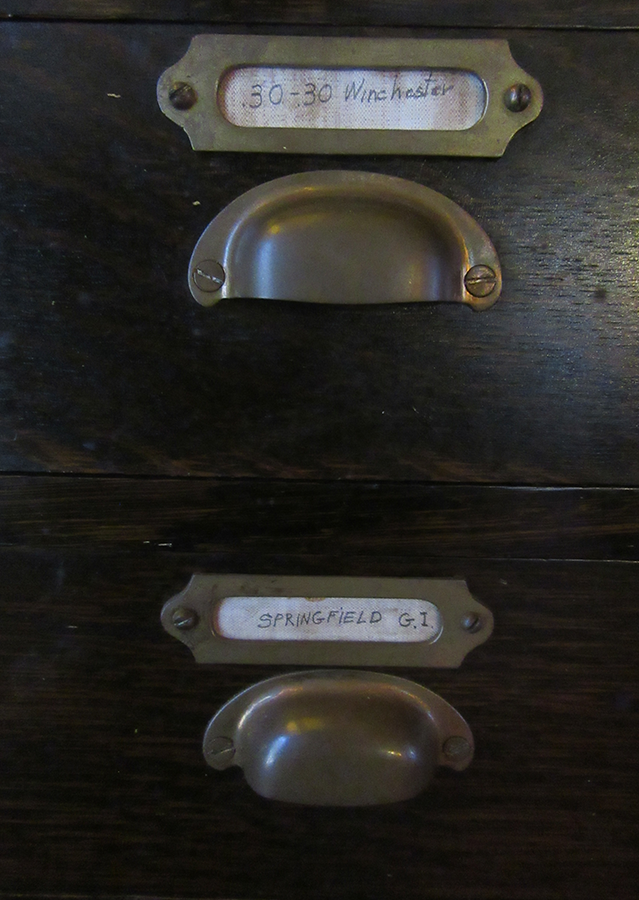
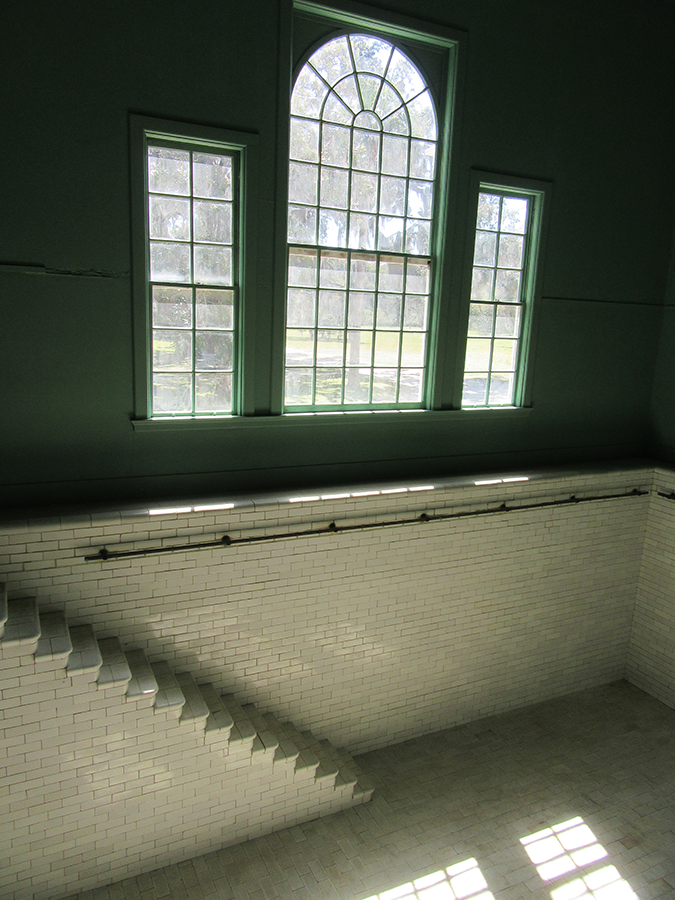
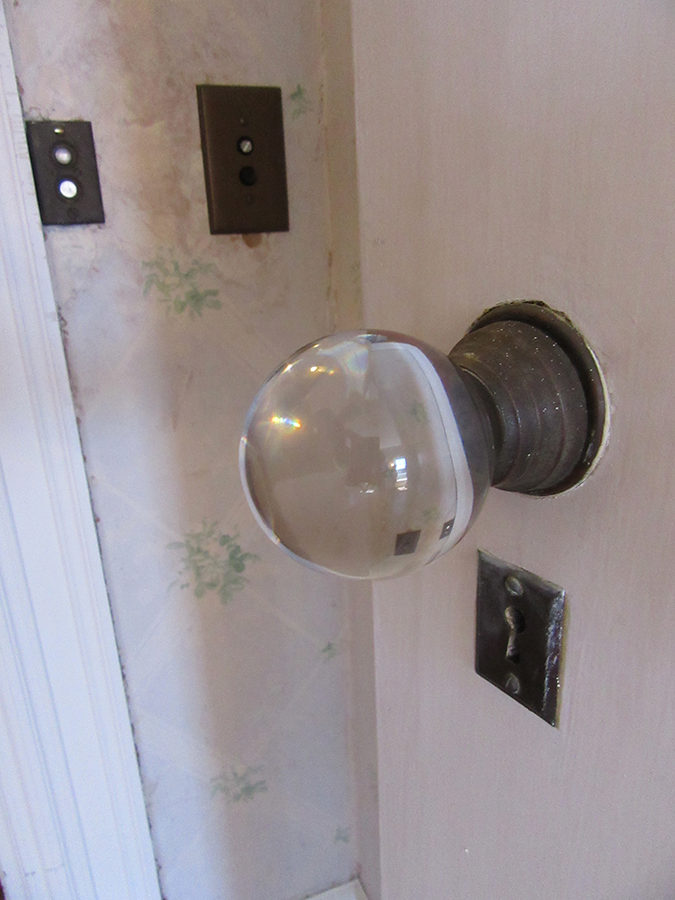
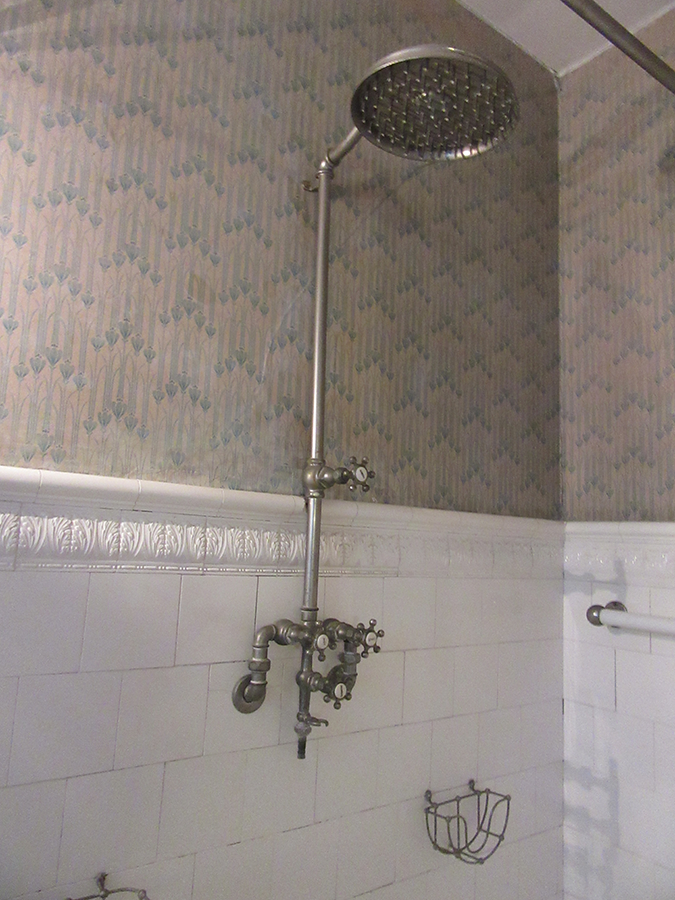
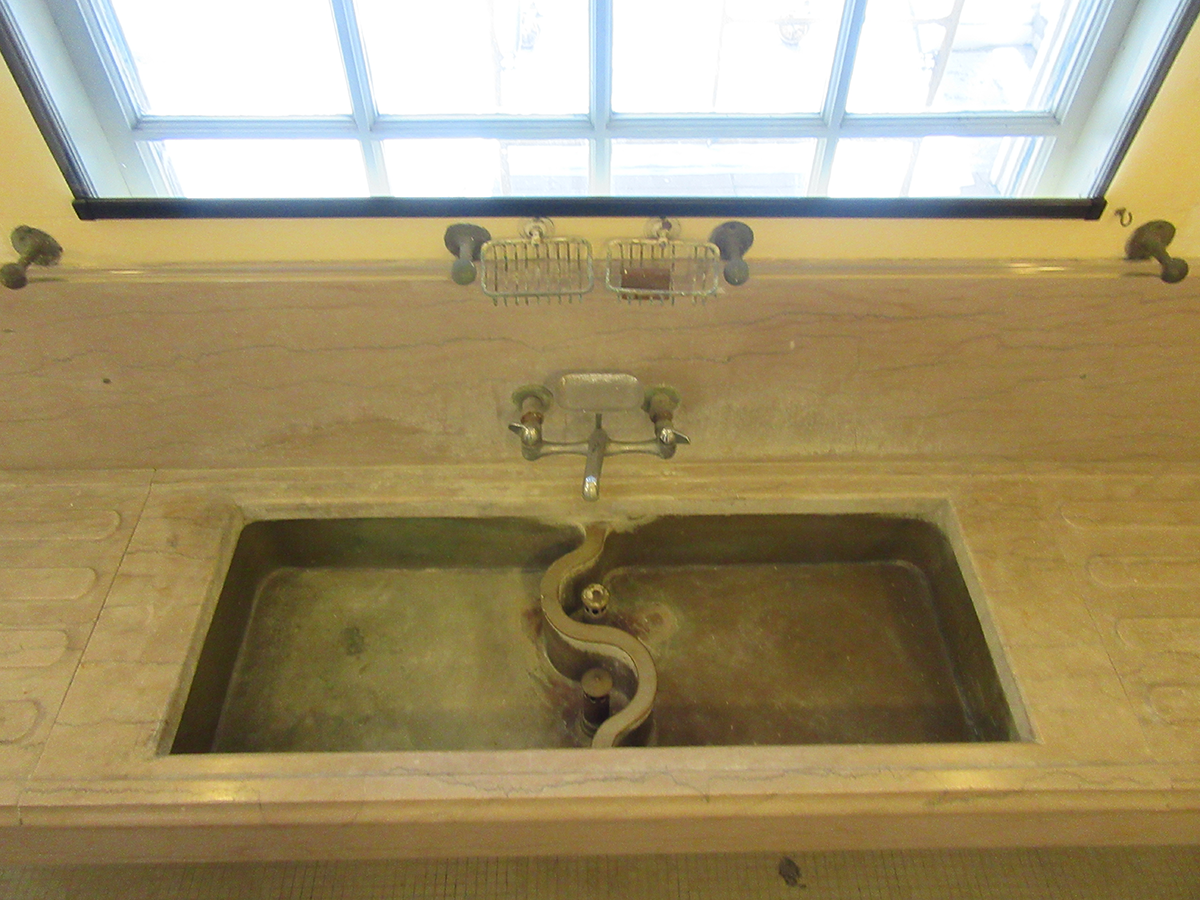
The grounds of the estate ain’t bad either with massive live oaks and palms, a view of the inland waterway, and a pond where alligators and storks can occasionally be spotted. Behind the building is another house still occupied by the family, one of a handful of private residences on the island.
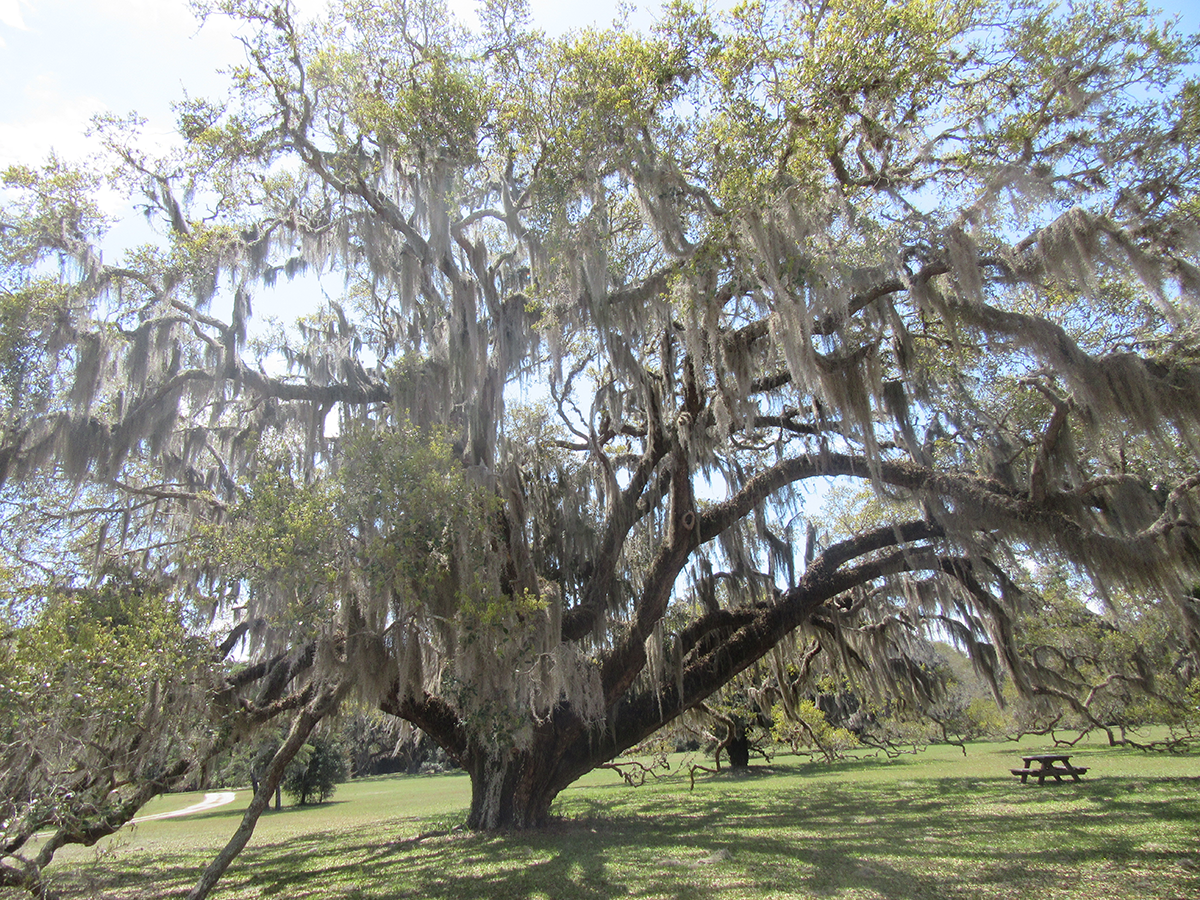
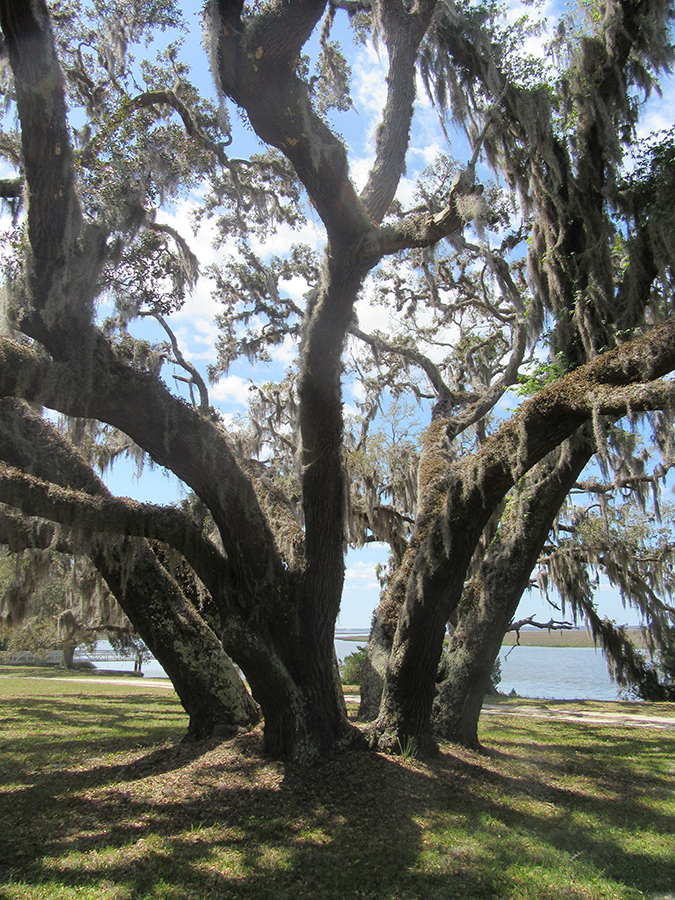
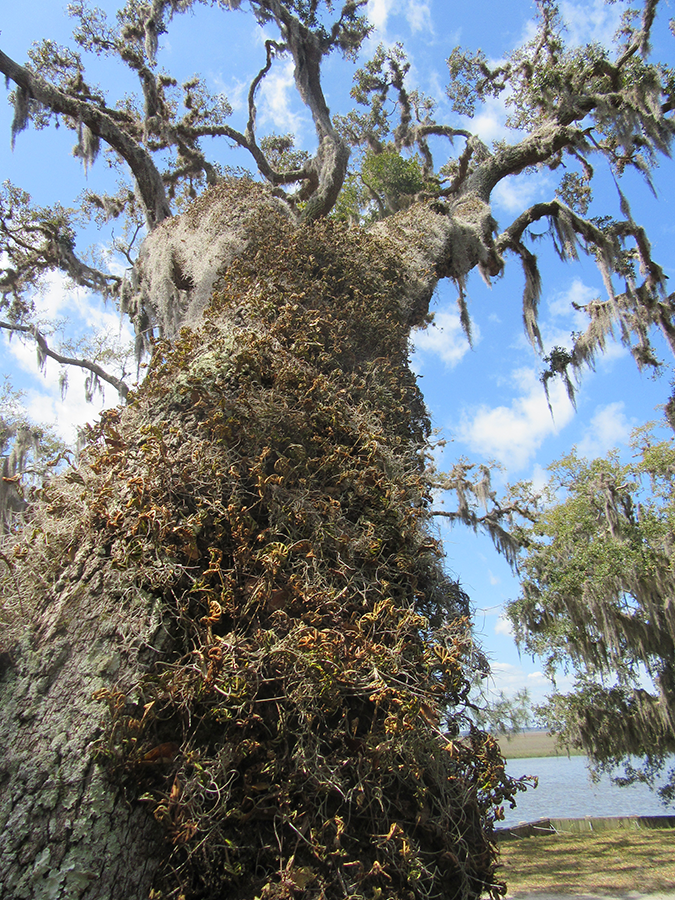
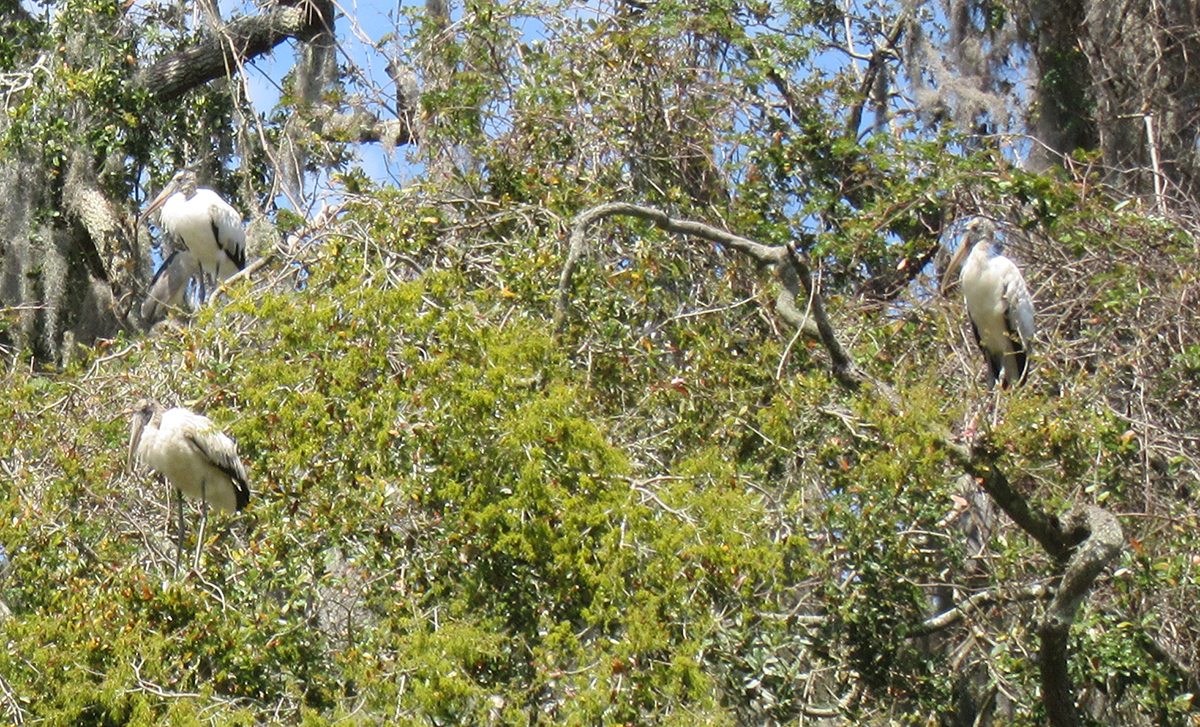
Still further north is “The Settlement,” a few crumbling houses, a tiny Baptist Church, and the home of the “Wild Woman of Cumberland,” a self-taught biologist who may know more about the island than anyone.
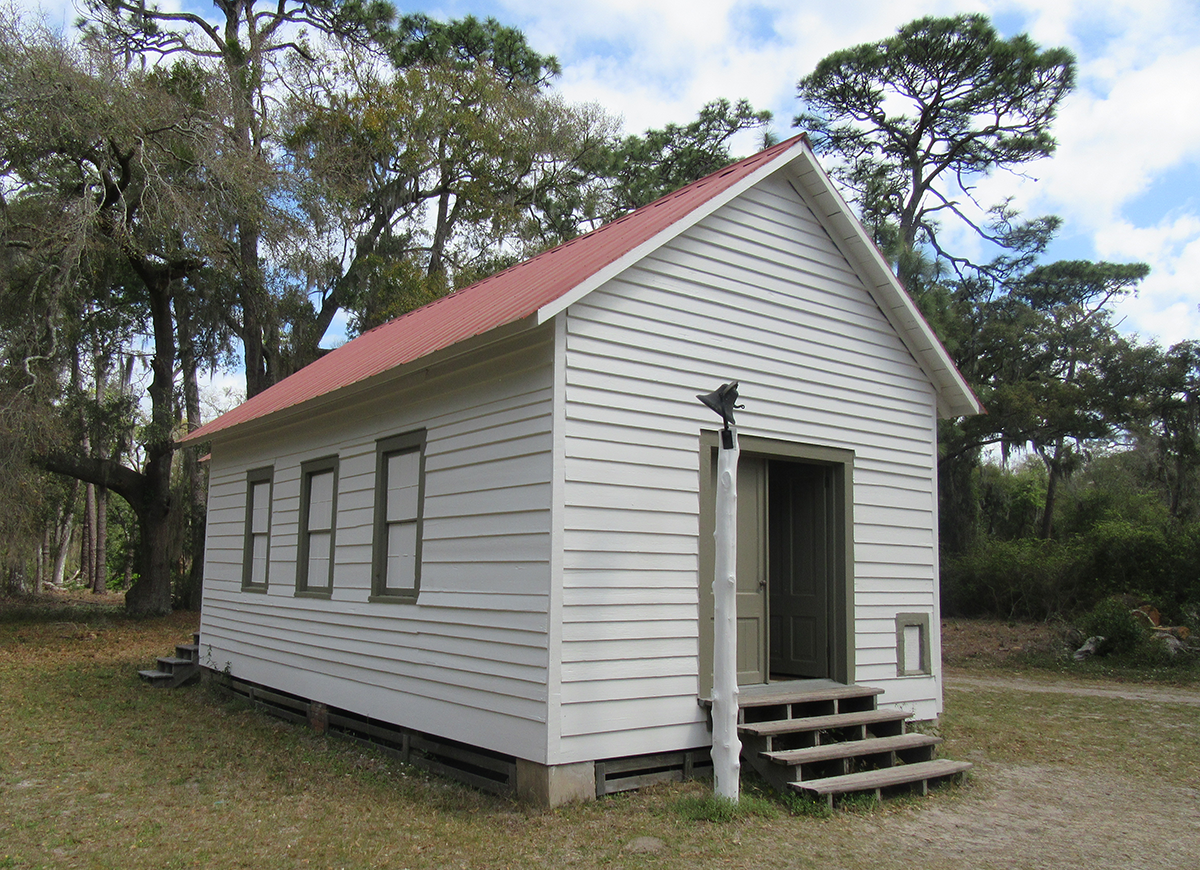
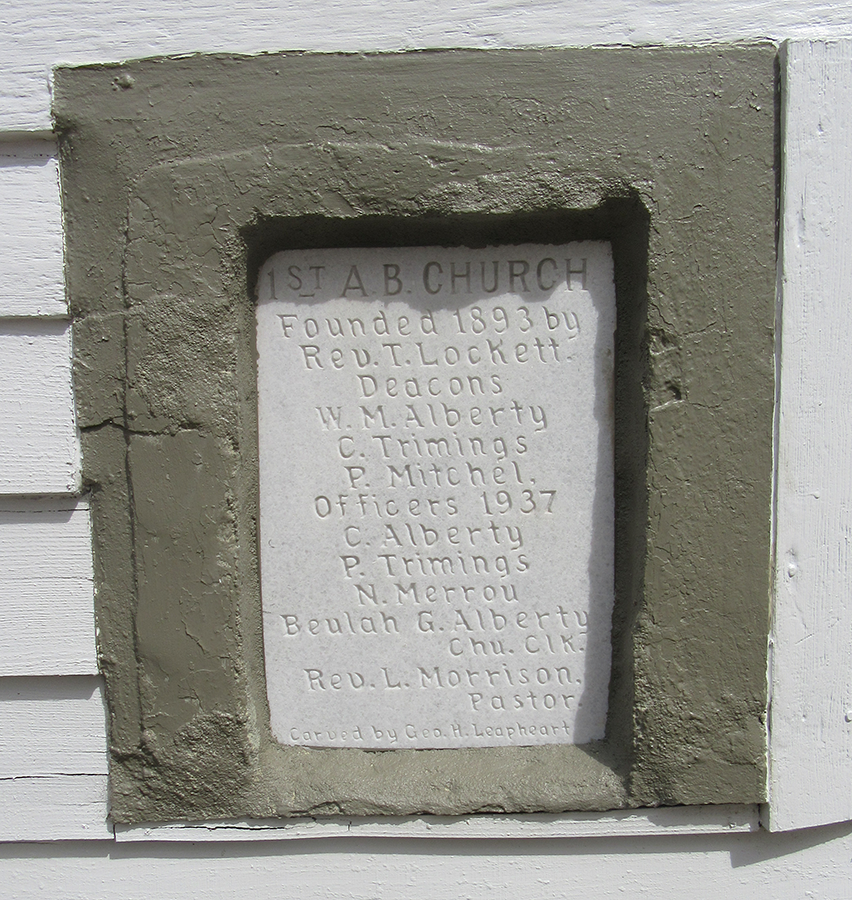
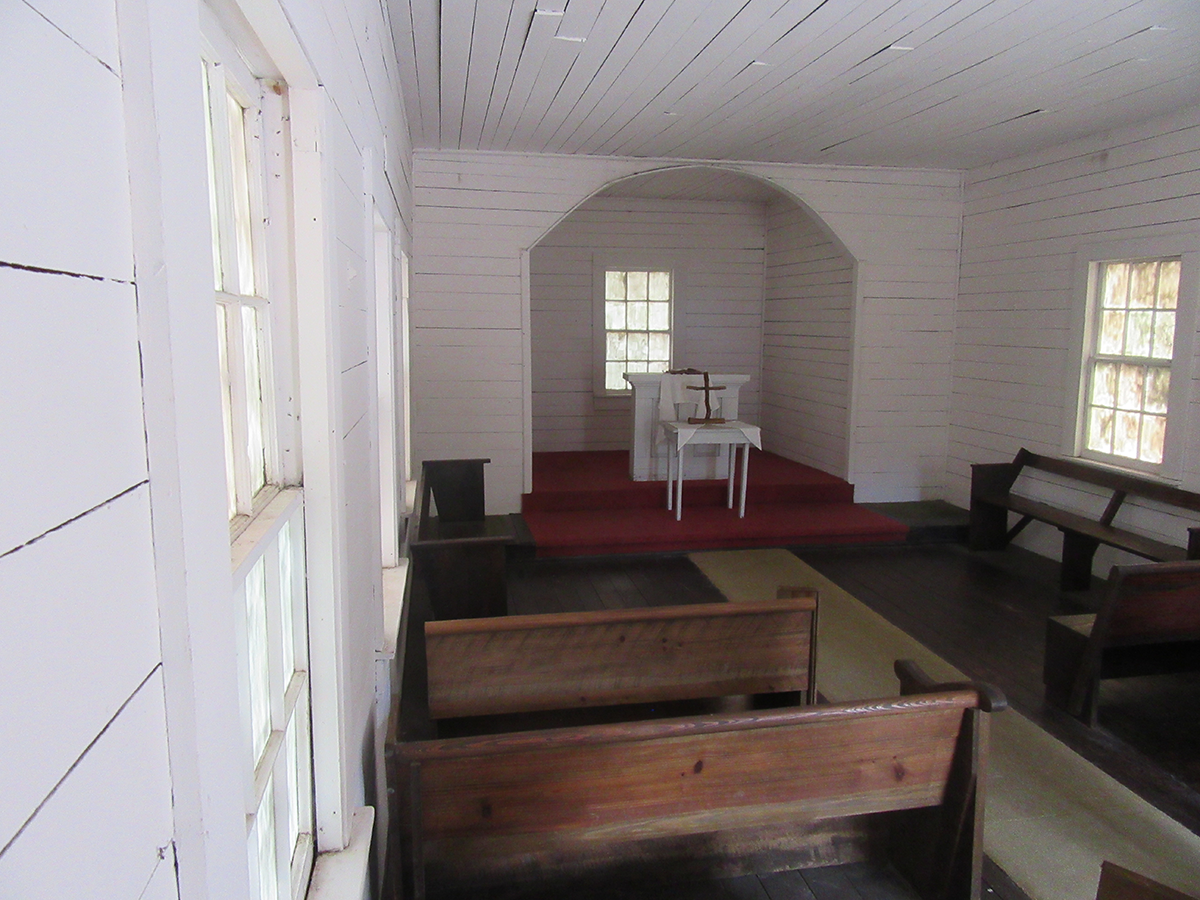
The tour also took us to a bluff on the northwest edge of the island, looking out over Little Cumberland, a private island of mostly marsh, and on to Jekyll Island. There were other stops along the way, including graveyards, former plantations, and Dungeness. Combined with the detailed, almost gossipy narration of the guide, the journey was worth the money. We abandoned the tour a little early, since we’d seen Dungeness a few times, and hiked through one of the primitive camps to make our way back to Sea Camp via the beach.
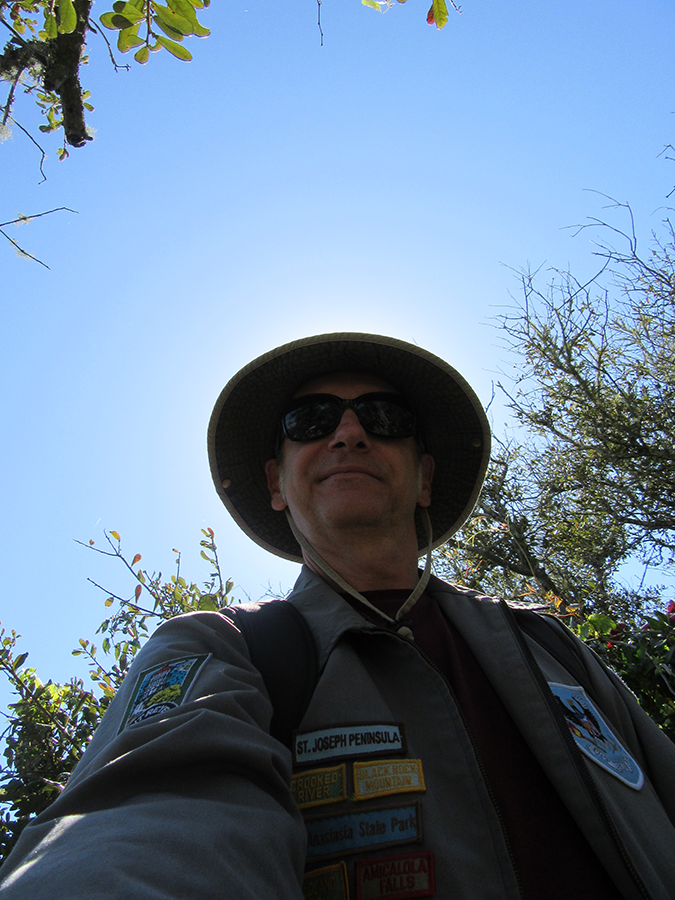
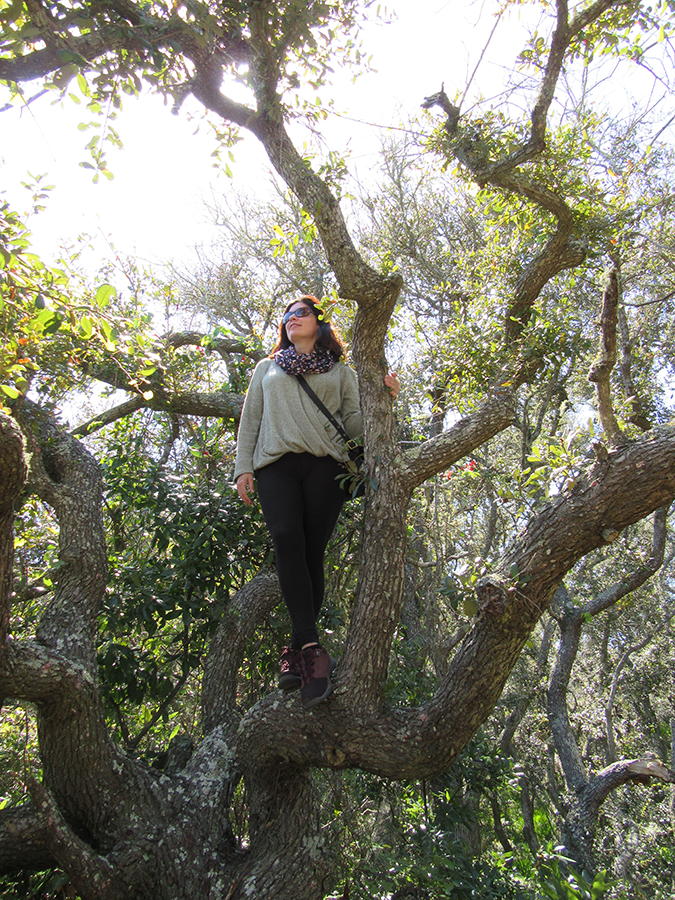
Along the way, we passed a few families staying in the only hotel on the island, Grayfield Inn. A night there will set you back $600 – more if you want a private bathroom – and there is a two night minimum. It comes with a ferry ride, tour, and supposedly incredible meals, but our stay was about 1/10th the cost.
In only two nights and three days, I felt like we’d seen just about everything the island had to offer. Were we to do it again, I’d stay longer so we actually had time to slack, read a book, lounge a bit. Late March was the perfect time to go – not too hot and not too many bugs. Cumberland rarely feels crowded, but there were a few empty spots in camp making it more quiet than peak season. The only down side was it was a bit too chilly to swim, especially without a shower bag to have a warm wash off afterward (something you can get online for about $15 so next time…)
The place is magical, so get the gear you need, get a reservation, and get down there!
